
Essays About Photography: Top 5 Examples Plus Prompts
Discover the joy of photography by reading our guide on how to write essays about photography, including top essay examples and writing prompts.
It is truly remarkable what pictures can tell you about the time they were taken and their subjects. For example, a well-taken photograph can expose the horrors of conflict in a war-torn country or the pain endured by victims of racial persecution. At the same time, it can also evoke a mother’s joy after seeing her newborn baby for the first time. Photography is crucial to preserving precious moments that deserve to be remembered.
Photography can be considered a form of art. So much intent is put into a picture’s composition, subject, angle, and lighting. There is a lot of talent, thought, and hard work that goes into photography to produce such thought-provoking images,
If you are writing essays about photography, you can start by reading some examples.

5 Essay Examples To Inspire You
1. why photography is a great hobby by lillie lane, 2. the importance of photography by emily holty, 3. why i love photography by bob locher.
- 4. The Shocking History Of Death Photography by Yewande Ade
- 5. Fashion photography by Sara Page
5 Helpful Prompts On Essays About Photography
1. what is your favorite thing to photograph, 2. why is photography so important, 3. should photography be considered an art form, 4. different types of photography, 5. interpretations of photographs.
“Be imaginative when writing your shots. Photography is about the impact of your chances. The odds are good that nobody will care to check over your picture When it is an item in a background. Discover how to produce a fantastic photograph, and take these skills and use them.”
Lane gives readers tips on taking better photos in this essay. These include keeping balance, choosing a subject widely, investing in certain pieces of equipment, and using the appropriate settings for taking pictures. She stresses that photos must appear as natural as possible, and following her advice may help people to get good pictures.
“No matter where you go photography plays into your life somehow. We don’t realize how big of an impact photography truly has on us until we see the details of our life hidden in a photograph. When you flip through your photo album and start looking for those details you suddenly realize you are truly blessed. A photograph keeps a moment frozen in time so we have it forever. Something like joy becomes clearer as we look deeper into the photograph.”
Holty does an excellent job of describing what makes photography so appealing to many people. You can take a picture of anything you want if you want to remember it, and photos help us look at the intricacies and details of what we see around us every day. Photography also helps us keep memories in our heads and hearts as time passes by, and most of all, it allows us to document the greatness of our world. It is ever-present in our lives, and we will keep taking photos the more adventures we have.
“Every day in normal circumstances people take thousands of pictures of the Grand Canyon. It takes very little thought to realize that few if any of these pictures will be in any way noteworthy above pictures already taken. But that said, they are OUR pictures, our personal affirmation of the wonderful scene stretched out below us, and that gives them a special validity for us.”
Locher reflects on the role photography played in his life and why he enjoys it so much, partly due to his spirituality. He previously worked in the photographic equipment business and rekindled his love for photography in his 60s. Photography, to him, is a way of affirming and acknowledging God’s creations around him and appreciating the natural world. He also briefly discusses the importance of equipment and post-editing; however, no photo is perfect.
4. The Shocking History Of Death Photography by Yewande Ade
“In fact, it was easier for the photographer if the dead person was in a sleeping position because there would be no need to put him or her in an appropriate position or prop the eyes open. The restful pose gave some families comfort because it made them believe that their loved one(s) had passed on happily and to a more peaceful realm. It gave the semblance of death as a painless act like sleep.”
An interesting phenomenon in the history of the camera is post-mortem photography, in which deceased people, usually children, were posed and made to look “alive,” to an extent, so their loved ones could remember them. This was done as a way of mourning; the subjects were made to look as if they were merely asleep to give their loved ones comfort that they had passed on peacefully and happily. Eventually, a reduction in the death rate led to the end of this practice.
5. Fashion photography by Sara Page
“Modern fashion photography differs because photographers aim to be extraordinary with their work, they know that extra ordinary will interest the audience much more It is extremely evident that fashion photography has changed and developed throughout the years, however there is not just reason. It is clear that fashion photography has changed and developed because of advancements in technology, change in attitudes and the introduction of celebrities.”
Page’s essay focuses on the history of fashion photography and some techniques used in practice. It dated back to 1911 and astonished the public with glamorous photos of people wearing perfectly-styled outfits. As the years have gone on, photographers have taken the lighting of the photos more into account, as well as their settings. In addition, editing software such as Photoshop has allowed even better photos to be produced. Fashion photography has only become more extravagant with the current social culture.
In your essay, write about your favorite subject when you take pictures- is it people, landscapes, objects, or something else? Explain why, give examples, and perhaps elaborate on your camera settings or the lighting you look for when taking photos.
Photography is an important invention that has helped us immensely throughout the years- how exactly? Explain why photography rivals painting and why it is essential. Then, write about its importance to you, the entire world, and humanity.
Some say photography pales compared to the intricacies of music, painting, sculpture, and even cinema and should not be considered a form of art. For an interesting argumentative essay, determine whether photography is genuine art or not and defend your position. Explore both sides of the topic and give a strong rebuttal against the opposing viewpoint.
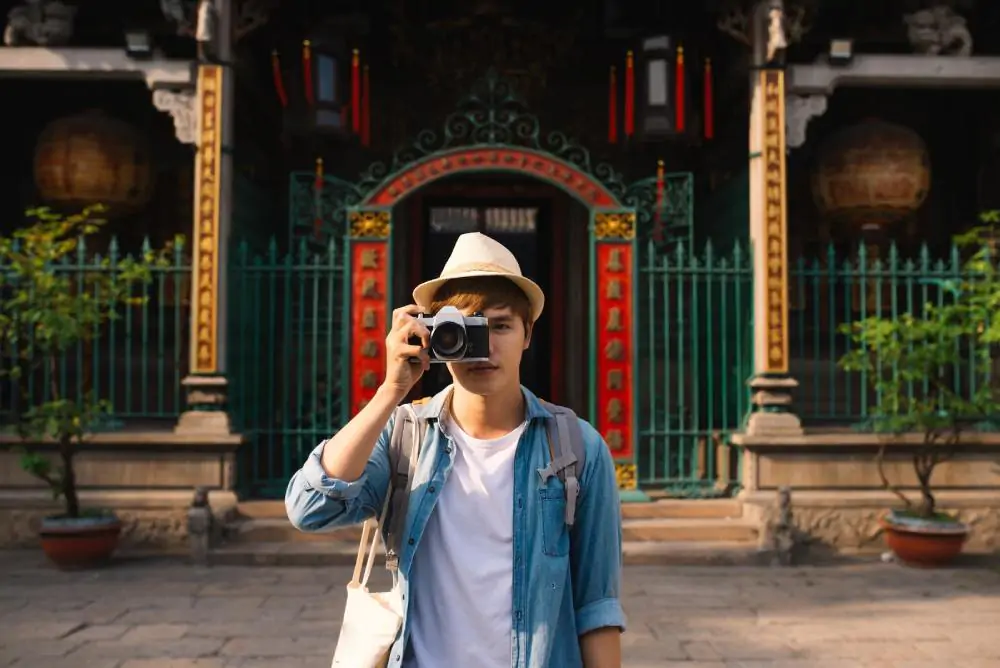
From street photography to food photography to portraiture, many different types of photography are classified according to the subject being captured. Write about at least three types of photography that interest you and what they entail. You may also discuss some similarities between them if any. Check out our list of the top CreativeLive photography courses .
Like other works of art, a photograph can be interpreted differently. Choose a photo you find exciting and describe how you feel about it. What is being portrayed? What emotions are being evoked? What did the photographer want to show here? Reflect on your chosen work and perhaps connect it with your personal life.
For help with your essays, check out our round-up of the best essay checkers . If you are interested in learning more, check out our essay writing tips !

Martin is an avid writer specializing in editing and proofreading. He also enjoys literary analysis and writing about food and travel.
View all posts

Essay on Photography
Students are often asked to write an essay on Photography in their schools and colleges. And if you’re also looking for the same, we have created 100-word, 250-word, and 500-word essays on the topic.
Let’s take a look…
100 Words Essay on Photography
What is photography.
Photography is the art of capturing pictures using a camera. A camera is like a box that keeps a moment from running away. When you take a photo, you save a memory that you can see later.
Types of Photography
There are many kinds of photography. Some people take photos of nature, like mountains and rivers. Others click pictures of cities or people. Some even capture stars at night. Each type tells a different story.
The Importance of Photography
Photos are important because they help us remember past times. They show us how things were and how they have changed. Photos can make us feel happy or sad by reminding us of different moments.
Learning Photography
Anyone can learn photography. You start by learning how to use a camera. Then you practice taking photos. Over time, you get better at making your pictures look nice. It’s fun to learn and can become a hobby or a job.
Also check:
- Paragraph on Photography
250 Words Essay on Photography
Photography is the art of capturing light with a camera to create a picture. This can be done using a digital camera or even a phone today. In the past, people used film cameras that had to be developed in a dark room.
The Magic of Cameras
A camera is a tool that takes in light through a lens and saves the image. In old cameras, light hit a film to create a photo. Now, digital cameras use electronic sensors to record the image. The sensors work like our eyes, catching light and colors.
There are many kinds of photography. Some people take pictures of nature, like forests and animals. Others like to take photos of cities and buildings. There are also photographers who take pictures of people and capture their emotions and moments.
To be good at photography, you need to learn how to use a camera well. You also need to understand light and how it affects your photos. Practice is important. The more you take pictures, the better you get at it.
Sharing Photos
After taking pictures, people often share them with others. They might put them on the internet, in a photo album, or hang them on a wall. Sharing photos lets others see the world through your eyes.
Photography is a fun and creative way to show how you see the world. It can be a hobby or a job, and it helps us remember special times and places.
500 Words Essay on Photography
Photography is the art of capturing light with a camera to create an image. This can be done using a digital camera that stores pictures electronically or an old-fashioned film camera that records them on film. When you take a photo, you freeze a moment in time, which you can look back on later.
The History of Photography
The story of photography began hundreds of years ago with simple cameras called pinhole cameras. Over time, inventors created better cameras and ways to make pictures clearer and more colorful. In the past, taking a photo was not easy; it took a long time for the picture to be ready. But now, thanks to modern technology, we can take pictures instantly with digital cameras and even our phones.
There are many kinds of photography. Some people take pictures of nature, like mountains, flowers, or animals. This is called nature photography. Others enjoy taking pictures of buildings or cities, known as architectural photography. Then there are photographers who like to take pictures of people. This can be portraits of one person or family photos with lots of people. Another exciting type is sports photography, where photographers capture fast-moving action at sports events.
How Photography Works
A camera works a bit like our eyes. When we look at something, light enters our eyes and helps us see. Similarly, when you take a picture, light comes into the camera through a hole called the lens. Inside the camera, the light hits a part that is sensitive to light, either film or a digital sensor, and creates an image.
Photography is important for many reasons. It helps us remember special moments like birthdays or holidays. It also lets us see places we’ve never been to and learn about different people and animals. Newspapers and websites use photos to show us what is happening in the world. Photography can even be a way for people to express their feelings and tell stories without using words.
Anyone can learn to take good photos. It’s not just about having an expensive camera. It’s about looking carefully at what you want to photograph and thinking about where to place things in the picture. It’s also about practicing a lot. The more photos you take, the better you get at it. There are also many books and videos that can teach you how to be a better photographer.
The Fun of Photography
Photography can be a lot of fun. It lets you be creative and can even turn into a hobby or a job. You can take pictures of your friends, pets, or trips you go on. With photography, you can explore new places and meet new people. The best part is, you can start at any age and keep learning and enjoying it your whole life.
In conclusion, photography is a powerful form of art that lets us capture memories, explore the world, and share stories. It’s a skill that anyone can learn and enjoy. Whether you’re taking a picture of a beautiful sunset or snapping a photo of your best friend laughing, photography helps us save those special moments forever.
That’s it! I hope the essay helped you.
If you’re looking for more, here are essays on other interesting topics:
- Essay on Phone Addiction
- Essay on Phishing
- Essay on Pet Fish
Apart from these, you can look at all the essays by clicking here .
Happy studying!
Leave a Reply Cancel reply
Your email address will not be published. Required fields are marked *
Save my name, email, and website in this browser for the next time I comment.
The leading authority in photography and camera gear.
Become a better photographer.
12.9 Million
Annual Readers
Newsletter Subscribers
Featured Photographers
Photography Guides & Gear Reviews

How to Create an Engaging Photo Essay (with Examples)
Photo essays tell a story in pictures. They're a great way to improve at photography and story-telling skills at once. Learn how to do create a great one.
Learn | Photography Guides | By Ana Mireles
Photography is a medium used to tell stories – sometimes they are told in one picture, sometimes you need a whole series. Those series can be photo essays.
If you’ve never done a photo essay before, or you’re simply struggling to find your next project, this article will be of help. I’ll be showing you what a photo essay is and how to go about doing one.
You’ll also find plenty of photo essay ideas and some famous photo essay examples from recent times that will serve you as inspiration.
If you’re ready to get started, let’s jump right in!
Table of Contents
What is a Photo Essay?
A photo essay is a series of images that share an overarching theme as well as a visual and technical coherence to tell a story. Some people refer to a photo essay as a photo series or a photo story – this often happens in photography competitions.
Photographic history is full of famous photo essays. Think about The Great Depression by Dorothea Lange, Like Brother Like Sister by Wolfgang Tillmans, Gandhi’s funeral by Henri Cartier Bresson, amongst others.
What are the types of photo essay?
Despite popular belief, the type of photo essay doesn’t depend on the type of photography that you do – in other words, journalism, documentary, fine art, or any other photographic genre is not a type of photo essay.
Instead, there are two main types of photo essays: narrative and thematic .
As you have probably already guessed, the thematic one presents images pulled together by a topic – for example, global warming. The images can be about animals and nature as well as natural disasters devastating cities. They can happen all over the world or in the same location, and they can be captured in different moments in time – there’s a lot of flexibility.
A narrative photo essa y, on the other hand, tells the story of a character (human or not), portraying a place or an event. For example, a narrative photo essay on coffee would document the process from the planting and harvesting – to the roasting and grinding until it reaches your morning cup.
What are some of the key elements of a photo essay?
- Tell a unique story – A unique story doesn’t mean that you have to photograph something that nobody has done before – that would be almost impossible! It means that you should consider what you’re bringing to the table on a particular topic.
- Put yourself into the work – One of the best ways to make a compelling photo essay is by adding your point of view, which can only be done with your life experiences and the way you see the world.
- Add depth to the concept – The best photo essays are the ones that go past the obvious and dig deeper in the story, going behind the scenes, or examining a day in the life of the subject matter – that’s what pulls in the spectator.
- Nail the technique – Even if the concept and the story are the most important part of a photo essay, it won’t have the same success if it’s poorly executed.
- Build a structure – A photo essay is about telling a thought-provoking story – so, think about it in a narrative way. Which images are going to introduce the topic? Which ones represent a climax? How is it going to end – how do you want the viewer to feel after seeing your photo series?
- Make strong choices – If you really want to convey an emotion and a unique point of view, you’re going to need to make some hard decisions. Which light are you using? Which lens? How many images will there be in the series? etc., and most importantly for a great photo essay is the why behind those choices.
9 Tips for Creating a Photo Essay

Credit: Laura James
1. Choose something you know
To make a good photo essay, you don’t need to travel to an exotic location or document a civil war – I mean, it’s great if you can, but you can start close to home.
Depending on the type of photography you do and the topic you’re looking for in your photographic essay, you can photograph a local event or visit an abandoned building outside your town.
It will be much easier for you to find a unique perspective and tell a better story if you’re already familiar with the subject. Also, consider that you might have to return a few times to the same location to get all the photos you need.
2. Follow your passion
Most photo essays take dedication and passion. If you choose a subject that might be easy, but you’re not really into it – the results won’t be as exciting. Taking photos will always be easier and more fun if you’re covering something you’re passionate about.
3. Take your time
A great photo essay is not done in a few hours. You need to put in the time to research it, conceptualizing it, editing, etc. That’s why I previously recommended following your passion because it takes a lot of dedication, and if you’re not passionate about it – it’s difficult to push through.
4. Write a summary or statement
Photo essays are always accompanied by some text. You can do this in the form of an introduction, write captions for each photo or write it as a conclusion. That’s up to you and how you want to present the work.
5. Learn from the masters
How Much Do You REALLY Know About Photography?! 🤔
Test your photography knowledge with this quick quiz!
See how much you really know about photography...

Your answer:
Correct answer:
SHARE YOUR RESULTS
Your Answers
Making a photographic essay takes a lot of practice and knowledge. A great way to become a better photographer and improve your storytelling skills is by studying the work of others. You can go to art shows, review books and magazines and look at the winners in photo contests – most of the time, there’s a category for photo series.
6. Get a wide variety of photos
Think about a story – a literary one. It usually tells you where the story is happening, who is the main character, and it gives you a few details to make you engage with it, right?
The same thing happens with a visual story in a photo essay – you can do some wide-angle shots to establish the scenes and some close-ups to show the details. Make a shot list to ensure you cover all the different angles.
Some of your pictures should guide the viewer in, while others are more climatic and regard the experience they are taking out of your photos.
7. Follow a consistent look
Both in style and aesthetics, all the images in your series need to be coherent. You can achieve this in different ways, from the choice of lighting, the mood, the post-processing, etc.
8. Be self-critical
Once you have all the photos, make sure you edit them with a good dose of self-criticism. Not all the pictures that you took belong in the photo essay. Choose only the best ones and make sure they tell the full story.
9. Ask for constructive feedback
Often, when we’re working on a photo essay project for a long time, everything makes perfect sense in our heads. However, someone outside the project might not be getting the idea. It’s important that you get honest and constructive criticism to improve your photography.
How to Create a Photo Essay in 5 Steps

Credit: Quang Nguyen Vinh
1. Choose your topic
This is the first step that you need to take to decide if your photo essay is going to be narrative or thematic. Then, choose what is it going to be about?
Ideally, it should be something that you’re interested in, that you have something to say about it, and it can connect with other people.
2. Research your topic
To tell a good story about something, you need to be familiar with that something. This is especially true when you want to go deeper and make a compelling photo essay. Day in the life photo essays are a popular choice, since often, these can be performed with friends and family, whom you already should know well.
3. Plan your photoshoot
Depending on what you’re photographing, this step can be very different from one project to the next. For a fine art project, you might need to find a location, props, models, a shot list, etc., while a documentary photo essay is about planning the best time to do the photos, what gear to bring with you, finding a local guide, etc.
Every photo essay will need different planning, so before taking pictures, put in the required time to get things right.
4. Experiment
It’s one thing to plan your photo shoot and having a shot list that you have to get, or else the photo essay won’t be complete. It’s another thing to miss out on some amazing photo opportunities that you couldn’t foresee.
So, be prepared but also stay open-minded and experiment with different settings, different perspectives, etc.
5. Make a final selection
Editing your work can be one of the hardest parts of doing a photo essay. Sometimes we can be overly critical, and others, we get attached to bad photos because we put a lot of effort into them or we had a great time doing them.
Try to be as objective as possible, don’t be afraid to ask for opinions and make various revisions before settling down on a final cut.
7 Photo Essay Topics, Ideas & Examples

Credit: Michelle Leman
- Architectural photo essay
Using architecture as your main subject, there are tons of photo essay ideas that you can do. For some inspiration, you can check out the work of Francisco Marin – who was trained as an architect and then turned to photography to “explore a different way to perceive things”.
You can also lookup Luisa Lambri. Amongst her series, you’ll find many photo essay examples in which architecture is the subject she uses to explore the relationship between photography and space.
- Process and transformation photo essay
This is one of the best photo essay topics for beginners because the story tells itself. Pick something that has a beginning and an end, for example, pregnancy, the metamorphosis of a butterfly, the life-cycle of a plant, etc.
Keep in mind that these topics are linear and give you an easy way into the narrative flow – however, it might be difficult to find an interesting perspective and a unique point of view.
- A day in the life of ‘X’ photo essay
There are tons of interesting photo essay ideas in this category – you can follow around a celebrity, a worker, your child, etc. You don’t even have to do it about a human subject – think about doing a photo essay about a day in the life of a racing horse, for example – find something that’s interesting for you.
- Time passing by photo essay
It can be a natural site or a landmark photo essay – whatever is close to you will work best as you’ll need to come back multiple times to capture time passing by. For example, how this place changes throughout the seasons or maybe even over the years.
A fun option if you live with family is to document a birthday party each year, seeing how the subject changes over time. This can be combined with a transformation essay or sorts, documenting the changes in interpersonal relationships over time.
- Travel photo essay
Do you want to make the jump from tourist snapshots into a travel photo essay? Research the place you’re going to be travelling to. Then, choose a topic.
If you’re having trouble with how to do this, check out any travel magazine – National Geographic, for example. They won’t do a generic article about Texas – they do an article about the beach life on the Texas Gulf Coast and another one about the diverse flavors of Texas.
The more specific you get, the deeper you can go with the story.
- Socio-political issues photo essay
This is one of the most popular photo essay examples – it falls under the category of photojournalism or documental photography. They are usually thematic, although it’s also possible to do a narrative one.
Depending on your topic of interest, you can choose topics that involve nature – for example, document the effects of global warming. Another idea is to photograph protests or make an education photo essay.
It doesn’t have to be a big global issue; you can choose something specific to your community – are there too many stray dogs? Make a photo essay about a local animal shelter. The topics are endless.
- Behind the scenes photo essay
A behind-the-scenes always make for a good photo story – people are curious to know what happens and how everything comes together before a show.
Depending on your own interests, this can be a photo essay about a fashion show, a theatre play, a concert, and so on. You’ll probably need to get some permissions, though, not only to shoot but also to showcase or publish those images.
4 Best Photo Essays in Recent times
Now that you know all the techniques about it, it might be helpful to look at some photo essay examples to see how you can put the concept into practice. Here are some famous photo essays from recent times to give you some inspiration.
Habibi by Antonio Faccilongo
This photo essay wan the World Press Photo Story of the Year in 2021. Faccilongo explores a very big conflict from a very specific and intimate point of view – how the Israeli-Palestinian war affects the families.
He chose to use a square format because it allows him to give order to things and eliminate unnecessary elements in his pictures.
With this long-term photo essay, he wanted to highlight the sense of absence and melancholy women and families feel towards their husbands away at war.
The project then became a book edited by Sarah Leen and the graphics of Ramon Pez.

Picture This: New Orleans by Mary Ellen Mark
The last assignment before her passing, Mary Ellen Mark travelled to New Orleans to register the city after a decade after Hurricane Katrina.
The images of the project “bring to life the rebirth and resilience of the people at the heart of this tale”, – says CNNMoney, commissioner of the work.
Each survivor of the hurricane has a story, and Mary Ellen Mark was there to record it. Some of them have heartbreaking stories about everything they had to leave behind.
Others have a story of hope – like Sam and Ben, two eight-year-olds born from frozen embryos kept in a hospital that lost power supply during the hurricane, yet they managed to survive.

Selfie by Cindy Sherman
Cindy Sherman is an American photographer whose work is mainly done through self-portraits. With them, she explores the concept of identity, gender stereotypes, as well as visual and cultural codes.
One of her latest photo essays was a collaboration with W Magazine entitled Selfie. In it, the author explores the concept of planned candid photos (‘plandid’).
The work was made for Instagram, as the platform is well known for the conflict between the ‘real self’ and the one people present online. Sherman started using Facetune, Perfect365 and YouCam to alter her appearance on selfies – in Photoshop, you can modify everything, but these apps were designed specifically to “make things prettier”- she says, and that’s what she wants to explore in this photo essay.
Tokyo Compression by Michael Wolf
Michael Wolf has an interest in the broad-gauge topic Life in Cities. From there, many photo essays have been derived – amongst them – Tokyo Compression .
He was horrified by the way people in Tokyo are forced to move to the suburbs because of the high prices of the city. Therefore, they are required to make long commutes facing 1,5 hours of train to start their 8+ hour workday followed by another 1,5 hours to get back home.
To portray this way of life, he photographed the people inside the train pressed against the windows looking exhausted, angry or simply absent due to this way of life.
You can visit his website to see other photo essays that revolve around the topic of life in megacities.
Final Words
It’s not easy to make photo essays, so don’t expect to be great at it right from your first project.
Start off small by choosing a specific subject that’s interesting to you – that will come from an honest place, and it will be a great practice for some bigger projects along the line.
Whether you like to shoot still life or you’re a travel photographer, I hope these photo essay tips and photo essay examples can help you get started and grow in your photography.
Let us know which topics you are working on right now – we’ll love to hear from you!

Check out these 8 essential tools to help you succeed as a professional photographer.
Includes limited-time discounts.
You'll Also Like These:

Ana Mireles is a Mexican researcher that specializes in photography and communications for the arts and culture sector.
Penelope G. To Ana Mireles Such a well written and helpful article for an writer who wants to inclue photo essay in her memoir. Thank you. I will get to work on this new skill. Penelope G.
Herman Krieger Photo essays in black and white
Leave a Comment Cancel Reply
👋 WELCOME TO SHOTKIT!

🔥 Popular NOW:

Unlock the EXACT blueprint to capture breathtaking iPhone photos!
Shotkit may earn a commission on affiliate links. Learn more.
Think you can get into a top-10 school? Take our chance-me calculator... if you dare. 🔥
Last updated March 17, 2023
Every piece we write is researched and vetted by a former admissions officer. Read about our mission to pull back the admissions curtain.
Blog > Common App , Essay Advice > How to Write a College Essay About Photography
How to Write a College Essay About Photography
Admissions officer reviewed by Ben Bousquet, M.Ed Former Vanderbilt University
Written by Alex McNeil, MA Admissions Consultant
Key Takeaway
Whether you're starting to dive into your personal statement or taking a bit out of extracurriculars, you're probably wondering which topics are OK to draw from in your essays.
Some topics are obviously valuable, while others are a bit more dubious. However, there's a third category: essay topics that may be overused to the point that they lose their potency and enter into the territory of cliché.
One topic that our students ask about a lot is essays about photography. Photography, being a fairly common extracurricular, is a writing area that many students explore every year on both personal and supplemental essays.
So that begs the question: Given the popularity of the topic, is it a good idea to craft your college essay around a photography topic? And if you do, what are some good ways to approach a photo essay that put the topic in its best light.
Warning: Overused extracurricular essays are hard to do well.
We won't sugar-coat it: an essay about a very common extracurricular may be set up to do less well than one about an extracurricular that's less common or in which you've performed EXTREMELY well.
A lot of students have taken an intro to photography class, borrowed a DLSR or film camera, and traipsed around their neighborhood shooting black-and-white stills of popular landmarks or landscapes.
Photography Essay Challenges
So, if photography resembles this kind of passing or casual hobby for you, you run into two problems right away.
I recommend honing in on a topic that has deeper meaning. It's the surest way to give admissions officers a clear and honest picture of who YOU are in a way that stands out from other students.
However, photography may be that topic for you. Just do some soul-searching before you commit to writing an essay about photography — ask yourself if it's REALLY a meaningful topic, or merely something you enjoy.
2. The other possible challenge is that photography is a very, very common extracurricular. I would guess that up to 15% of all student applicants list photography on their resumes, and a fair share of those probably choose to write something about it, even if just in an extracurricular essay.
Now, I really don't encourage students to plan their essays around novelty, novelty, novelty. Because novelty for its own sake is never a good solution. However, you should try to avoid the most commonly-used essay topics or at least be CERTAIN that you have a meaningful way to approach them.
For a photography essay, for example, I would want to be sure that you've achieved something pretty significantly impressive as a photographer — maybe you've won a national championship or your work has been featured in National Geographic. Okay, or maybe you’ve contributed or received recognition on a more local level, but the point still stands.
If that's the case, or something like it, you might be in a great position to start writing a photography college essay that stands out from the crowd. So give it a go.
OK, warning over. Let's talk about some strategies for writing an effective college essay about photography.
Ways to approach a college essay about photography
I want to provide two possible ways to write an essay about photography, the "snapshot" approach and the "lens on the world" approach. Keep in mind that these are just two ideas to get your brain jogging about the possibilities. Always try to be creative!
Essay Framework #1: Snapshot structure
The "snapshot" structure is a way of structuring your narrative into a series of "snapshot" moments that take the writer through a journey.
A "snapshot" approach to an essay about photography might work really well. Each frame could be a literal snapshot — a meaningful picture that represents something about your life or your journey through photography.
You could write this essay as a series of short "vignettes," little episodes that add up to a powerful story about what photography has meant to you since you started.
Essay Framework #2: Lens to see the world
This framework shares some similarities to the snapshot structure. Here, you would show the reader how you see the world from behind the lens of your camera.
When I was shooting more often (I, too, saved up to buy a refurbished DSLR in high school and fancied myself a photographer for a few years), I remember how sharpened my ability to see details became. I was way more perceptive and observant of the world around me. And when I was actually behind the lens, I saw the world in a different way — bound by rules of composition, light sources, and quiet but eloquent moments worth capturing.
In this essay framework (which is not quite as structured as the snapshot frame) you could take the reader behind the lens and show them how the world transforms or opens up for you when you're shooting.
In both cases, what's key is that the narrative clearly shows an admission committee that photography isn't just an idle pastime or hobby. Instead, they should understand that photography is one of the key ways that you interact with and understand the world.
If you don't feel like your participation with photography meets this high bar, then you might want to go hunting for different themes to anchor your essay. In all of your essays, writing about meaningful experiences that have deep roots in your life is the way to go.
Please, please: Do NOT write an essay about photography because you think it diversifies your narrative even though you don't really care too much about it. Admissions officers will sniff that out and not smile favorably on the tactic.
Liked that? Try this next.

The Incredible Power of a Cohesive College Application

20 College Essay Examples (Graded by Former Admissions Officers)

How to Write Supplemental Essays that Will Impress Admissions Officers

How to Write a Personal Statement for Colleges
"the only actually useful chance calculator i’ve seen—plus a crash course on the application review process.".
Irena Smith, Former Stanford Admissions Officer
We built the best admissions chancer in the world . How is it the best? It draws from our experience in top-10 admissions offices to show you how selective admissions actually works.
How To Create a Meaningful Photography Essay In 5 Steps
The storytelling nature of photography is no secret. It has been used for a century to narrate stories in a very peculiar and effective way. Narrative photographic projects have great power, and regardless of the level of experience and maturity of the photographer, they are very appealing. Find out how to create a meaningful photography essay in 5 steps.
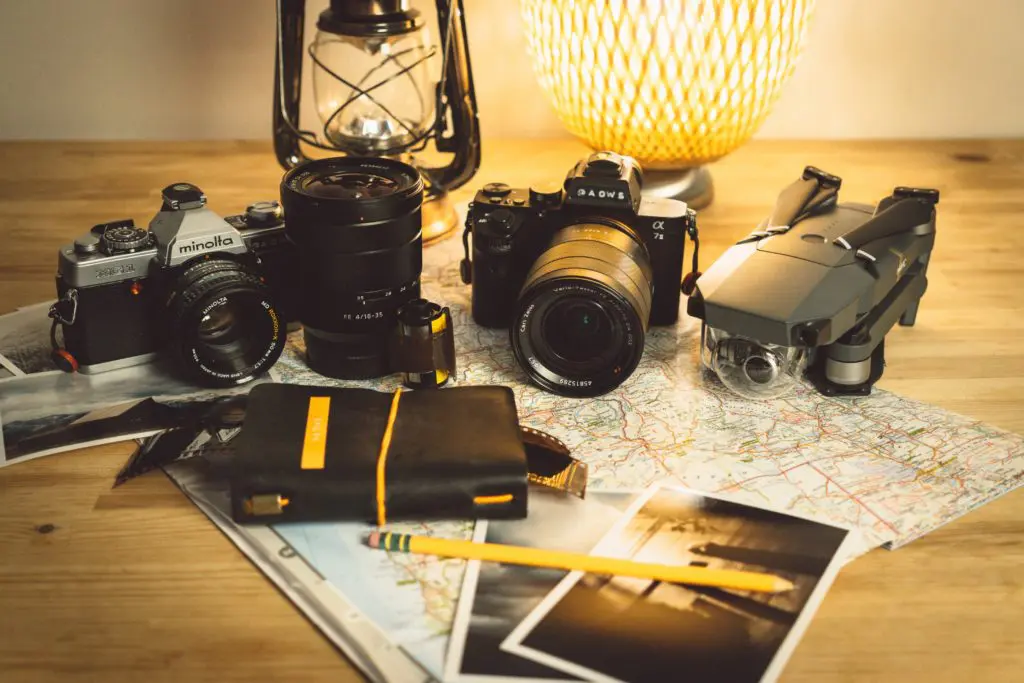
Photography is an amazing art form that portrays interesting stories, events, adventures, life stories, experiences, history and has been around for a very long time having great influence in human life and emotions. Photography freezes the moment and records real life happenings that can be cherished for a lifetime and beyond. To make a good photograph, the photographer needs to look for perfect locations, light, subjects and add a little creativity to it.
Rather than a single image, a set or collections of images are always more powerful in telling a story, bringing in emotions within the viewer and taking/guiding the viewer through the path of the story. It is self consistent, self explanatory and doesn't another person to help with any form of narration. Besides these, photography essays can be a powerful source to bring out suppressed problems in the societies and other issues that are often overlooked.
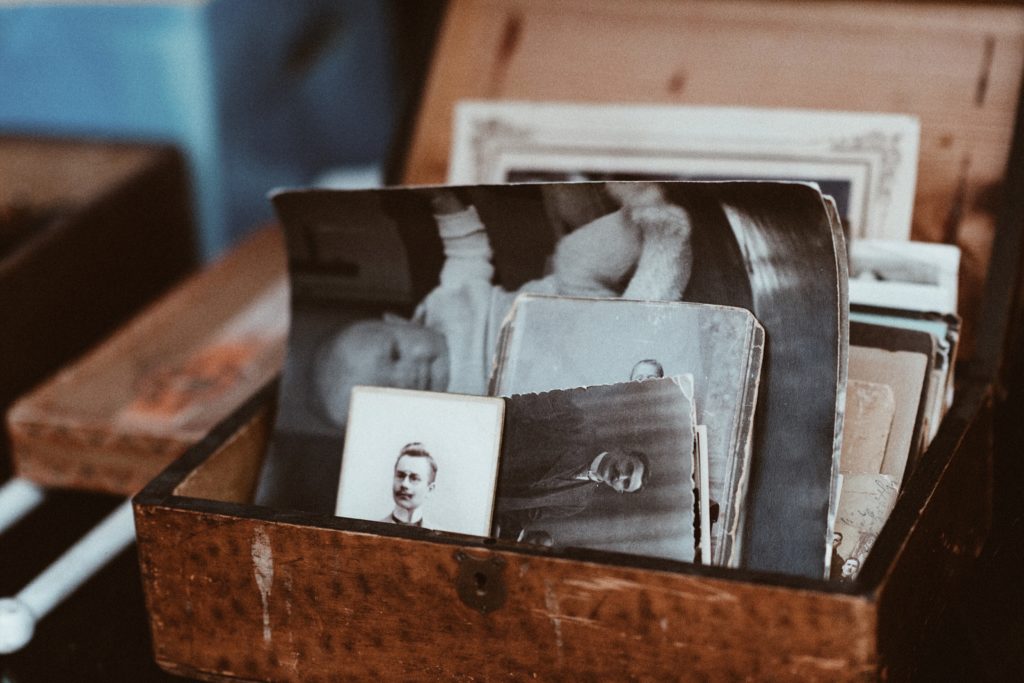
Photographic essays invite us to research a topic or a theme in depth. Documentary photography is perhaps one of the closest things to “narrative” as we traditionally know it. Even though times have changed, and photography has been open to more independent photographers who don't have the same resource bonanza as the editorial or journalistic photographers of previous decades, this new democracy opens the door to the freedom of speech – a freedom that doesn't have to obey any media interests whatsoever.
Alright, But What Is A Photography Essay In The First Place?

A photo essay is a narrative that uses a group or series of photographs to tell a story, evoke emotions or emphasize a specific concept. The camera plays a utilitarian role, and is pretty far from what the final result can convey to those who read it (either completely or just partially). Photography essays can be either just photographs or photographs with comments, captions or text that accompany them to complete the story.
Some examples of photography essays include collage (simplest form of telling a story), an article, a book, an art show or exhibition, part of a website or a dedicated website and so on. Earlier photography essays were printed in the printing press, but in recent times they have moved to the web which is better in terms of easy access, but will not have a similar effect to looking and reading one physically.
What Elements Should A Photography Essay Include?
Being a narrative in a very holistic form, a photography essay should include the following elements in the most extreme cases:
- Introduction
- Contextualization
- Development
- Continuation
Not all essays will allow such a complex storyline, but we can take some of these elements to formulate an idea of what an essay should include. Therefore, a photo essay is a way to tell a story from beginning to end, with substance and a meaningful content.
Most photographic essays require preparation, organization and direction. Photographic essays began to be published in the 1930s after magazines saw that a story could best be told if text was accompanied by photographs. It is no coincidence that, by this time, cameras had evolved such that they could capture images quickly enough to freeze motion.
Also around this time, portability came into the picture, thanks to the practical nature of 35mm film . It was LIFE magazine that coined the term “Photographic Essay”. One of the most classic photography essays they published is “ Country Doctor ” by W. Eugene Smith . This essay documented Dr. Ceriani’s working life as a traveling doctor in rural areas of the United States.
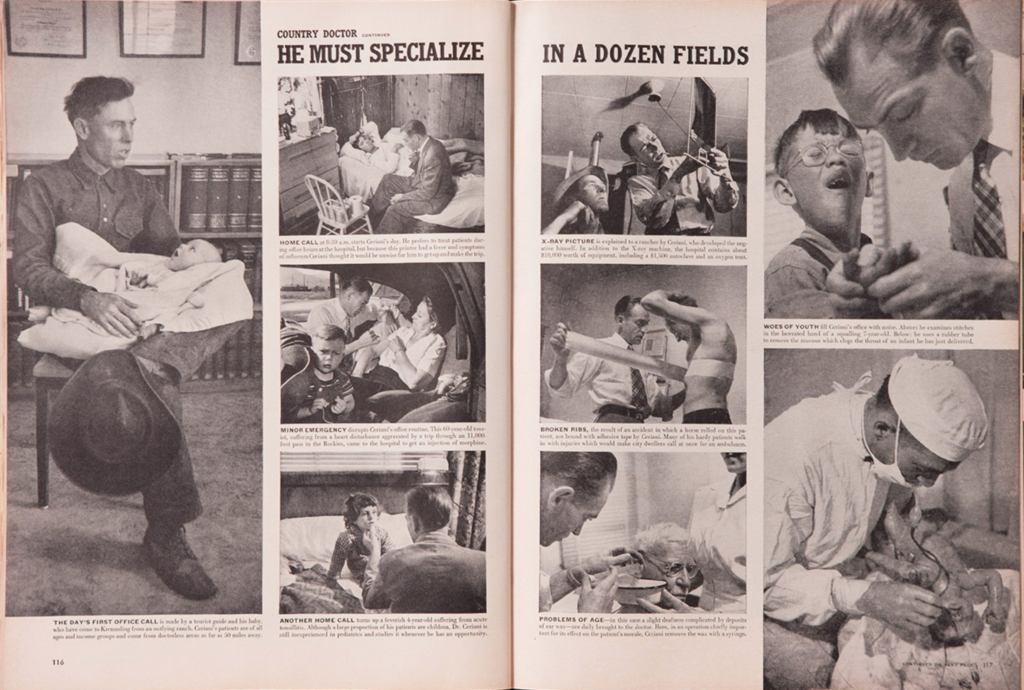
An essay can be short, mid- or long-term according to various factors that can affect the image recording process. After achieving a certain number of images, the editing process can take place and the story can begin its narrative course. Some things that can affect the recording process are the limited resources we endure while working abroad, and limited access to the subject or the circumstances-recurrence ratio.
Here Are The 5 Steps Involved In Creating A Photography Essay:
1. pick a topic.
Obvious indeed, but choosing a good topic can be difficult without prior research. This is perhaps the hardest part of creating a photographic essay.
The wisest way to approach this is to select a topic that won't be so hard to access – not just because it might be easy. Since it will be accessible, the risk of frustration will be lower than it is when handling a difficult topic. Experience will eventually lead us into working with trickier subjects.

A photo essay doesn't need to always be dramatic and dense. They can be done just for the fun of it, or to discover new possibilities for the photographic narrative. Some topics that are generous when they are addressed are:
- Everyday Work
2. Choosing The Subjects Correctly
When working on a photographic essay, it is important to choose subjects correctly to keep ourselves within a certain scope. Check to see if your subjects are suitable or the story you are planning to tell and if the stories made with them will be interesting for your target audience.
Even if you don't have a human subject to portray, making use of personification can always be a good guide to avoid losing course. For example, you can focus on silence by stating that the images attempted to capture the presence of silence.
Also, solitude can be addressed without any human elements, but still maintain the purpose of capturing “the human footprint”, for example.
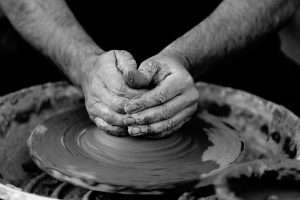
3. Quantity Of Images
It is important to define the number of pictures we are willing to present on our final essay. Defining that number is important for a couple of reasons.
- The first one is because it will set the bar of our project's scope (critical when we start to consider our resources).
- The second one is our readers. The story should be told from start to finish with high impact, just like a short novel or a story. If we stuff our essay with “filler” images, it will ultimately lose its power.

4. Execution
Let the fun part begin! After defining the previous three elements, we can start shooting to create a great storytelling essay. Shooting story telling photographs for a photography essay need to be powerful just like how you would shoot individual images to tell a story. Look for perfect light, relevant locations relating to the story to be told, perfect subjects for the story and also compositional guidelines.
Always have introductory and closing images just like how you would have an introduction and conclusion to any essay. Shoot at different light, angles, perspectives, etc. and finalise during the editing part the images that will work together to complete the photography essay.
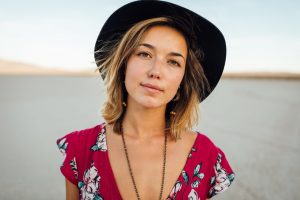
Editing must not be confused with post-processing, which is an important element of the production of the final photographs. Editing refers to the precise selection of the images that will be included in the essay. There is no perfect quantity or order. You (or your editor) will have to be very objective to select the perfect mix to tell the story the way you want it to be told.
Ak yourself questions like, do the photographs speak the story or will they require accompanying text, is the sequence or series logical, do they stand together and complete the story from start to finish, etc. Try and tell the story with minimal images by avoiding repetition as that can bore the viewers.

Who Can Create A Photography Essay?
Some photographers believe that only photojournalists or documentary photographers can create photography essays. That is not the case – photo essays can be created on any topics like nature, wedding, events, portraits, travel, etc.
Constant planning, execution and checking can and should be applied to all the stages discussed above. You will need to have a powerful title and written text that is strong and concise. Sometimes longer text may be required.
Photo essays are a great way to improve not just as photographers, but as storytellers, too. Viewing photo essays with a reader's mindset will give you a better feeling of photography’s storytelling power.
About Author

Federico has a decade of experience in documentary photography , and is a University Professor in photography and research methodology . He's a scientist studying the social uses of photography in contemporary culture who writes about photography and develops documentary projects. Other activities Federico is involved in photography are curation, critique, education, mentoring, outreach and reviews. Get to know him better here .
Dear Federico, this is a very informative, to the point article for everyone who wants to enter the world of creating photo essays. Currently, I am teaching photography at one of the well known institutes in India and I am playing a role of a honeybee. I am creating a blend of my experience along with such articles and letting the student know what are the pros and cons of various genres of photography and how to go about it. I am obviously giving you credit for this article. Thanks and you are welcome to India. You will love my country!
Frederico, thank you for this article about photo essays! I am both a digital photographer and a freelance writer, and this idea combines both of my passions. What are the most successful photo essays that you have done that you can share?
Hi, Thank you for the article, very interesting, something I would really love to try. I do have one question though, how do I know whether a photo essay would be a success, who would judge it?
I have emailed Frederico asking permission to reprint this article in my photo club’s digital newsletter (www.spsphoto.org). I would like your permission as well. We are having a photo essay competition this month. I will include links to the original article, as well as yours and Federico’s website. Thank you.
Fine by us, Linda. Thanks for asking first.
Thank you, and Federico, for permission to reprint. I am sure my photo club members will appreciate this timely article for our annual photo essay competition !
Leave a Reply Cancel
Your email address will not be published. Required fields are marked *
Table of Contents

Latest Posts

Drone Safety and Etiquette: Responsible Aerial Photography

How to Shoot Panoramic Photographs

What We Can Learn From Shooting Film Cameras

How to Shoot in Manual Mode
The Beauty of Photography: An Opinion Essay
During my time at the New York University Tisch School of the Arts, I learned techniques of working with different tools, such as both movie and DSLR cameras. It was interesting to use either device and explore their capabilities as well as the ideas I could implement with them. However, ultimately, I leaned toward the DSLR cameras and still photography rather than the motion of the film. I think that most people should at least try taking some creative photos, both of real situations and the sets that they create.
Photography is a unique form of art that has become one of the most influential in human history despite its relative novelty. According to Barnbaum (2017), it combines the inherent realism that stems from the accurate depiction of a real scene with the photographer’s message, expressed through the choice to take the shot. As a result, good photos make one look at the situation from a different angle, capturing a myriad of details that one had formerly not noticed.
However, not all things can be photographed at one’s convenience, which is where set design comes in. Powerful moments and old eras pass, and objects or locations no longer exist, having disappeared before the advent of photography. However, the set design allows you to recreate these times and places in as much detail as you like. Making them as true to reality as you can is a massive challenge and one that I think many people will enjoy.
Barnbaum, B. (2017). The art of photography: A personal approach to artistic expression (2 nd ed.). Rocky Nook.
- Chicago (A-D)
- Chicago (N-B)
IvyPanda. (2022, February 19). The Beauty of Photography: An Opinion. https://ivypanda.com/essays/the-beauty-of-photography-an-opinion/
"The Beauty of Photography: An Opinion." IvyPanda , 19 Feb. 2022, ivypanda.com/essays/the-beauty-of-photography-an-opinion/.
IvyPanda . (2022) 'The Beauty of Photography: An Opinion'. 19 February.
IvyPanda . 2022. "The Beauty of Photography: An Opinion." February 19, 2022. https://ivypanda.com/essays/the-beauty-of-photography-an-opinion/.
1. IvyPanda . "The Beauty of Photography: An Opinion." February 19, 2022. https://ivypanda.com/essays/the-beauty-of-photography-an-opinion/.
Bibliography
IvyPanda . "The Beauty of Photography: An Opinion." February 19, 2022. https://ivypanda.com/essays/the-beauty-of-photography-an-opinion/.
- Impact of the Invention of the Camera on Art
- Race Represented in American and Chinese Music
- Acute Anxiety Impairs Accuracy in Identifying Photographed Faces
- The Works of Famous Photographers
- Photography and Society Through History: Political and Ideological Functions
- The Photographic Approaches Towards American Culture of Robert Frank and Gary Winogrand
- Photographic Approaches Towards Landscapes: Peter Henry Emerson
- Knowing Andy Warhol’s Life and Photography
- "Esther Before Ahasuerus" by Artemisia Gentileschi
- Early, High, and German Renaissance
- The Invention of Daguerreotypes
- Jack Dykinga's Photography
- Margaret Bourke-White: A Historically Significant Photographer
- Four-step critique of Salvador Dali
- Photography: Critical Analysis
Ten examples of immersive photo essays

By Marissa Sapega — Contributing Writer
Photo essays are one of the most powerful forms of storytelling in the last century. From the great depression photographer W. Eugene Smith to the photojournalism of National Geographic or Life Magazine , the best photo essays entertain, educate, and move readers more than words alone ever could.
But photo essays have changed. Over the last decade, web publishing technologies — including web browsers and file formats — have improved by leaps and bounds. A good photo essays today is more than a collection of images. It’s a truly interactive, immersive, and multimedia experiences.
In this guide, we introduce 10 stunning examples of visually arresting interactive photo essays to fuel your creative juices.
Now, let's set the scene with a short introduction to immersive, interactive photo essays on the web.
What do the BBC, Tripadvisor, and Penguin have in common? They craft stunning, interactive web content with Shorthand. And so can you! Publish your first story for free — no code or web design skills required. Sign up now.
The rise of immersive, interactive photo essays
What is an immersive, interactive photo essay? Let's take these terms one at a time.
An immersive photo essay uses rich media and story design to capture and keep the reader's attention. Immersive content is typically free of the most distracting elements of the web, such as pop-ups, skyscrapers, and other intrusions on the reading experience.
As a basic rule of thumb, immersive content respects the reader's attention.
An interactive photo essay is one that allows the reader to control how the content appears. It may include interactive elements, like maps and embedded applications.
More commonly, modern interactive photo stories use a technique known as scrollytelling . Scrollytelling stories allow the reader to trigger animations and other visual effects as they scroll. Many of the examples in this guide use scrollytelling techniques. Read more scrollytelling examples .
Until relatively recently, immersive, interactive photo essays could only be created with the help of a designer or web developer. But with the rise of digital storytelling platforms , anyone can create compelling, dynamic stories without writing a single line of code.
If you're looking to learn more about how to create a photo essay — or are looking for more photo essay ideas — check out our introduction to photo essays .

Photo essay topics
If you’re looking for photo essay examples, chances are you’re looking to create a photo essay for yourself. If you’re just getting started, you might want some guidance on exactly what kinds of topics make for great photo essays.
More experienced photographers — feel free to skip this section. But for those who are just starting out, here’s a quick list of classic photo essay subject matter, for all types of photo essays.
- Local events. A great way to start out is photograph local events in your community, such as a high school fundraiser. A bonus is that you’ll have a ready
- Historic sites. Another classic photo essay topic is an exploration of a historic site. This could be a building, a monument, or even just a specific location that has significance.
- Profile of a person. A great way to get to know someone is to profile them in a photo essay. This could be a family member, friend, or even just someone you’ve met.
- Animals in captivity. Another popular subject matter for photo essays is animals in captivity, whether that’s at a zoo or elsewhere.
- A day in the life. Have you ever wondered what it’s like to live someone else’s life for a day? Why not find out and document it in a photo essay?
- Street photography. Another great way to practice your photography skills is to head out into the streets and photograph the everyday lives of people around you. The world has plenty of photo essays of cities like New York and London. But what about street photography in your own backyard?
- Still life photography. Still life photography is all about capturing inanimate objects on film. This could be anything from flowers to furniture to food. It’s a great way to practice your photography skills and learn about composition
- Landscapes . Landscape photography is one of the most popular genres, and for good reason. There are endless possibilities when it comes to finding interesting subjects to shoot. So get out there and start exploring!
- Abandoned buildings. There’s something fascinating about abandoned buildings. They offer a glimpse into the past, and can be eerily beautiful. If you have any in your area, they make for great photo essay subjects.
- Lifestyles. Document someone who lives a lifestyle that’s different from your own. This could be a portrayal of an everyday person, or it could be someone with an unusual job or hobby.
- Social issues. Take photos depicting significant social issues in your community, remembering to respect your subjects.
Ten inspiring photo essay examples

Pink lagoon and peculiar galaxies — July’s best science images

In Pink lagoon and peculiar galaxies , Nature present a mesmerising series of images from the natural world. Highlights include:
- a blink-and-you’ll-miss-it photo of rare albino orcas performing feats of synchronized swimming;
- an arresting aerial view of the aftermath of the flash floods in Germany; and,
- a scarlet gawping Venus flytrap sea anemone.
The best part? Nature publishes similarly powerful photo essays every month, showcasing some of the best and most creative photography of the natural world anywhere on the web.

Vanishing Lands

Vanishing lands — an ominously interesting photo essay from media company Stuff — opens with a bucolic visual featuring meandering sheep flanked by breathtaking mountains that blur into obscurity.
Soon, more awe-inspiring photos of breathtaking New Zealand farmland appear, accompanied by expressive prose whose tone matches the visuals’ stark beauty.
In this unflinchingly honest photographic essay, Stuff takes the viewer behind the scenes with a day in the life of a high country sheep farmer facing an uncertain future. One stunning photo fades into the next as you scroll through, broken only by the occasional noteworthy quote and accompanying narrative.

Olympic photos: Emotion runs high

This emotionally wrought sports story from NBC begins with a close-up of an anxious Simone Biles, her expression exemplifying the tension and frustration echoed on so many of her fellow athletes’ faces.
The subtitle puts it perfectly: “The agony—and thrill—of competition at the Olympics is written all over their faces.”
Devastation, disappointment, and defeat take centre stage in this piece — but not all the subjects of the photos in this compelling photography essay depict misery. Some of the images, like that taken of the gold medal-winning Russian artistic gymnasts, manage to project the athletes’ joy almost beyond the edges of the screen.
The NBC editors who created this visual story chose to display the series of photos using the entire screen width and limit the copy to simple captions, letting the visuals speak for themselves. The result is a riveting montage of photographs that manage to capture the overarching sentiment of the 2020 Olympic Games.

James Epp: A Twist of the Hand

In A Twist of the Hand , the Museum of Classical Archaeology at the University of Cambridge have produced a gorgeous photo essay. This online art show showcases artist James Epp’s installation, combining photographs of the exhibit with images of museum prints and authentic artefacts.
As you scroll down, close-up shots of the installation make you feel like you’re physically wandering among the ancient sculptures, able to examine hairline spider cracks and tiny divots marking the surface of every antiquated figure. In between the photos—and often flanked by museum prints—are James Epp's musings about what inspired him to create the pieces. It’s an absorbing virtual gallery that will no doubt inspire real life visits to the exhibition.

The Café Racer Revolution

Though it’s a cleverly built piece of interactive content marketing , Honda’s “ Café Racer Revolution ” is also a great photo essay. Alongside information about the latest and greatest motorcycles Honda has to offer, it details the history of the bikers who sought to employ motorcycles (specifically “café racers”) as a way to forge an identity for themselves and project a “statement of individuality.”
Scroll down, and nostalgic black-and-white photos give way to contemporary action shots featuring fully decked-out motorcyclists on various Honda models.
Dynamic photos of bikes rotate them 360 degrees when you mouse over them, and text superimposed over flashy shots rolls smoothly down the screen as you scroll. This photo essay will stir a longing to hit the open road for anyone who has ever dreamed of owning one of Honda’s zippy bikes.

Built to keep Black from white

In Built to keep Black from white , NBC News and BridgeDetroit have built a stunning narrative photo essay that encapsulates the history of Detroit’s Birwood Wall — a literal dividing line intended to separate neighborhoods inhabited by people of different races.
The piece begins with a brief history of the concrete barrier. Between paragraphs of text, it weaves in quotes from residents who grew up as the wall was erected and a short video. Animated maps highlighting the affected neighborhoods unspool across the screen as you scroll down, accompanied by brief explanations of what the maps represent.
In the series of photographs that follow, contemporary images transition into decades-old shots of the wall when it was newly constructed. This is followed by images of original real estate documents, resident portraits, and additional animated maps — each considering the issue from different angles.
The piece ends with an interactive display of how Detroit’s racial makeup has changed over the past several decades, from majority white to black, and how the wall has impacted the lives of its residents who lived (and died) within its borders.

The story of Black Lives Matter in sport

The BBC pairs illustrations and bold imagery in this photo essay on how athletes participated in the Black Lives Matter movement . At the start, a narrow column of text leads into an iconic image of American football players kneeling during the pre-game national anthem in a solemn protest against police brutality.
The first excerpt, a summary of Trayvon Martin’s death in 2012, draws you in with piercing prose capped off with photographs that bleed into one another. Every account in the photo essay follows this layout.

WaterAid Climate Stories

Climate change affects everyone on the planet, but some people are feeling the effects more than others. WaterAid’s scrollytelling photo essay illuminates the plight of individuals living in areas where extreme weather conditions — caused by climate change — have drastically impacted the water supply and environment, endangering their livelihoods and ability to survive.
This climate change story starts with an engrossing video that provides an up-close and personal look at the devastation that climate change-induced droughts have wreaked on people and the environment. As you scroll down, images of massively depleted bodies of water with superimposed text and quotes unfold before your eyes. It’s an efficient way to drive home the critical message WaterAid wants to convey: climate change is real, and it’s harming real people.
Each extreme weather story focuses on an individual to help viewers empathise and understand that climate change has real, drastic consequences for millions of people worldwide. The piece ends with a call to action to learn more about and financially support WaterAid’s fight to assist people living in the desperate situations depicted in the essay.

28 Days in Afghanistan

In this piece, Australian photo-journalist Andrew Quilty tells the story of the four weeks he spent in Afghanistan . He captures daily events ranging from the mundane—like a casual visit to his barber—to jarring. More than one photo documents blood-spattered victims of violence.
Viewers must scroll through the piece to follow Andrew’s daily musings and the striking photos that accompany them. His photo essay is a powerful example of how scrollytelling is transforming the art of long-form journalism .

La carrera lunática de Musk y Bezos (Musk and Bezos' lunatic careers)

Billionaires Elon Musk and Jeff Bezos are angling to conquer the final frontier: space.
El Periódico captures their story via a whimsically illustrated photo essay, filled with neon line drawings and bold photos of the massive spaceships, the hangars that house them, and footprints on the moon. La carrera lunática de Musk y Bezos describes the battle between the two titans’ space companies (Blue Origin and SpaceX) for the honor of partially funding NASA’s next mission to the moon.
As you scroll down, white and fluorescent yellow words on a black background roll smoothly over images. The team at El Periódico slips in stylistic animations to break up the text—such as rocket ships with shimmering “vapour trails”—then ups the ante with a series of moon images that transition into portraits of the 12 U.S. astronauts who visited the celestial body.
The photo essay ends with the question: “Who will be the next to leave their footprints on the dusty lunar soil?” At the time of publishing, NASA had not yet decided between the two companies. (Spoiler alert: SpaceX won .)

Marissa Sapega is a seasoned writer, editor, and digital marketer with a background in web and graphic design.
Publish your first story free with Shorthand
Craft sumptuous content at speed. No code required.
Essay About Photography – 2901 Words
Essay about photography.
Photography is one of the most fascinating and rewarding hobbies out there. From capturing a moment in time to creating beautiful works of art, photography can be an incredibly fulfilling experience. Whether you’re new to photography or have been practicing for years, writing about it can help you gain insight into how others view this craft. In this essay, I’ll discuss why I think photography is worth pursuing and provide tips on how to become successful at taking pictures.
The world around us has so much beauty to offer; however, we often don’t take the time appreciate it. That’s where photography comes in – by taking a picture of something that catches our eye, we are able to capture a moment in time that would otherwise be lost forever. It gives us the opportunity to look more closely at what lies beyond the surface and understand its true beauty.
It takes skill and practice to master any type of art form – including photography. But with dedication and an open mind, anyone can learn how to make stunning images that will last a lifetime. I’m going to share my thoughts on why photography is so important as well as some tips on improving your skillset and gaining confidence behind the camera lens!
Definition Of Photography
I have always been fascinated by photography. It’s such an amazing art form that has the power to capture moments and emotions in a way that words alone cannot. But what exactly is photography? How do we define it?
Photography is defined as the practice of creating still or moving pictures by recording radiation on a sensitive medium, such as a film or an electronic sensor. In simpler terms, it is the creation of images through light exposure. Photography can be both artistic and scientific at the same time. While some photographers are focused more on capturing beautiful visuals for their art, others use photography to document scientific events and experiments from a different perspective.
The definition of photography goes beyond just taking photos; it involves creativity, skill, knowledge and understanding of technology. Photographers must understand how to use lighting, composition, angles and shutter speed to create stunning visuals that evoke emotion in viewers. They must also know how to manipulate digital images using various software programs like Adobe Photoshop . With all these elements combined, photographers can truly bring their vision to life with stunning works of art they have created themselves!
History Of Photography
It is impossible to deny the influence that photography has had on our world. It is a commonly held belief that its invention was an essential turning point in human history, and as such, it’s worth examining how we got here – exploring the timeline of its evolution.
The first experiments with photographic images began over 200 years ago when Joseph Nicéphore Niépce used bitumen-based substances to capture rudimentary camera obscura images onto paper or pewter plates. This led to Louis Daguerre further developing this technique into what became known as daguerreotype in 1839; using silver iodide coated copper plates instead of paper or metal plates. Not long after, William Henry Fox Talbot invented another photography process which used negative prints on paper – a method still widely used today.
By the mid 1800s, advances in technology allowed for faster shutter speeds and better lenses; creating sharper pictures than ever before. There was also significant progress made in terms of color photography through the inventions of Kodachrome film by Leopold Godowsky Jr and Leopold Mannes in 1935. From there, digital cameras were created around 1975 and have since become more sophisticated with each passing year; allowing us to take even clearer photographs than those taken centuries ago!
Photography has certainly come a long way since its earliest days, but its impact continues to grow as time progresses – making it one of the most important innovations ever created. With so much development behind it, let’s now move forward and explore some different types of photography available today…
Types Of Photography
I’m an avid photographer, so I’m familiar with the different types of photography. There are many genres that photographers explore and specialize in. Landscape photography is one type of photography where you take pictures of beautiful scenery such as mountains, beaches and rivers. Wildlife photography focuses on capturing images of animals in their natural habitats or zoos. Product photography involves taking photos to showcase products for advertising purposes. Street photography captures candid shots of everyday life while architectural photography is all about photographing buildings and structures like monuments, bridges and skyscrapers.
Photography can also be divided into categories based on the techniques used by photographers. This includes macro photography which takes close-up photographs to capture details normally not visible to the naked eye, time lapse photography which uses a series of still frames taken at regular intervals over a period of time to create a video sequence when combined together and night sky photography involving shooting stars or other celestial objects using long exposure settings.
No matter what technique you use or genre you specialize in, it’s always important to remember that each style has its own unique set of challenges and rewards. With this in mind, let’s move onto discussing some of the benefits of engaging in various forms of photographic artistry.
Benefits Of Photography
I believe that photography is an incredibly powerful tool. It serves as a memory-keeping device, allowing us to capture moments in time that we can look back on and reflect upon with fondness. Photography also provides us with an emotional expression outlet. We use it to express our feelings or tell stories through visual means. For me personally, this has been a therapeutic form of release when words fail to adequately describe my emotions.
Additionally, photography offers creative expression opportunities for anyone who wishes to explore their artistic side. From taking pictures of landscapes and wildlife to capturing candid shots at special events, there are endless possibilities for those looking for ways to hone their skillset and practice visual storytelling techniques.
Through its many benefits, I have come to appreciate the power of photography and why so many people find fulfillment in engaging with this activity.
Equipment Used In Photography
Now, let’s move on to the various tools and equipment that can be used in photography. Cameras come in many shapes and sizes, ranging from digital cameras to traditional analog film cameras. There are also a variety of camera lenses available for photographers to choose from depending on their desired effect. Additionally, tripods stands help stabilize photos by providing stability during long exposure shots. Shutter speed is another important factor as it helps control how quickly or slowly an image is taken.
Furthermore, lens filters can also be used to create unique effects such as blurring your background or adding saturated colors. All these elements combine to form different creative techniques in photography that allow you to take amazing photographs with minimal effort.
Creative Techniques In Photography
I’m fascinated by the creative techniques that photographers use to capture stunning images. Long-exposure photography is one of my favorites, producing amazing results with light trails and night scenes. Night-photography is also popular, allowing skilled shooters to depict stars in the sky or cityscapes like never before. Macro-photography allows me to explore a world I can’t see with the naked eye; capturing intricate details on flowers, insects, and other small objects.
Portrait-photography captures expressions and emotions beyond words – creating an unforgettable image for friends, family members, and models alike. Architectural-photography presents breathtaking beauty in stark lines and angles – offering unique perspectives of buildings around the globe. These are just some of the many fascinating aspects of photography that make it such a captivating art form! With each new technique comes endless possibilities to create memorable works of art no matter what style you prefer.
Frequently Asked Questions
Q1. What Is The Best Camera For A Beginner Photographer?
Ans: When you are starting out in photography, finding the right camera for your needs can be a daunting task. With so many types of cameras and lens choices available, it’s hard to know what is best for a beginner photographer like yourself. Here I’ll break down some key factors to consider when selecting the perfect beginner camera:
* Camera Types – Do you want an entry-level DSLR or mirrorless camera? Or perhaps something more compact like a point-and-shoot? Consider how much control you want over settings, as well as portability and budget.
* Camera Equipment – What type of lenses do you need? Are there any additional accessories that will help improve your photos such as filters, tripods, flash units etc.? Make sure to research which brands and models are compatible with your chosen camera body.
* Beginner Lens – Look into purchasing one prime lens rather than several cheaper zooms. Prime lenses tend to have better image quality and build quality at a lower price point. This makes them ideal for beginners who don’t yet need all the bells and whistles of an expensive zoom lens.
* Budget – Set yourself a realistic budget before diving into buying gear. The cost of cameras can vary greatly depending on brand, model, features included and more; make sure you know what is important to you versus what might be nice but not necessary.
* Research Reviews – Read reviews from photographers who purchased the same camera that interests you in order to get their opinion about its strengths and weaknesses firsthand. Additionally, YouTube videos provide excellent tutorials on various pieces of equipment if needed!
It’s easy to feel overwhelmed by all these decisions when selecting your first camera, but taking the time to understand your own needs and researching different options can ensure that you get exactly what works best for you while staying within your budget. Don’t forget that even after making those initial purchases there is still plenty of room for growth with future upgrades – just remember that practice trumps technology every time!
Q2. How Much Does Professional Photography Equipment Cost?
Ans: When it comes to professional photography equipment cost, the numbers can be staggering. According to a survey by Digital Photography School, the average photographer spends over $12,000 on gear – and that’s just for basic camera bodies and lenses! Investing in high-quality digital photography equipment is essential if you want your images to look their best. For many photographers, however, understanding exactly what they need to purchase (and how much it will cost) can be confusing.
The exact amount you’ll need to spend depends largely on the type of photographs you’re taking. If you’re shooting weddings or portraits, for example, you may require more expensive lighting kits than those used for landscape photos or wildlife shots. That said, most beginner photographers should expect to pay anywhere from $2,000 – $4,500 for all the necessary photography gear needed to get started. This includes a camera body, several lenses, memory cards and other accessories such as tripods and filters.
It’s also important to remember that investing in quality digital photography equipment doesn’t end with buying your initial set up; overtime you’ll likely need to upgrade certain components like batteries or flashes which will add additional costs. With this in mind it’s wise to factor these potential expenses into your budget when estimating total photography equipment cost.
To sum up: while purchasing professional grade photography gear certainly isn’t cheap, having access to quality tools can make all the difference between producing an amateurish snapshot and creating artful masterpieces worthy of display!
Q3. What Are The Most Popular Places To Take Photos?
Ans: Photography is an enjoyable pastime for some and a career path for others. Aspiring photographers often ask: what are the most popular places to take photos? There are several types of photography, each with their own unique style and settings that make them stand out.
Travel photography takes place at different destinations around the world. This type of photography gives viewers a sense of wonder and exploration as they admire images taken from exotic locations. Nature photography captures stunning landscapes or close-up shots of plants and animals in their natural habitat. Wedding photography documents special occasions such as weddings, engagements, anniversaries, etc., while street photography consists of candid photographs taken on city streets worldwide.
Lastly, portrait photography focuses on capturing people’s emotions through posed or unposed shots.
Every photographer has his or her favorite location when taking pictures; however, the top spots tend to vary depending on personal preference and photographic style. Some great places to get started include beaches, parks, forests, mountainsides and urban areas like downtown districts or busy streets; these offer lots of interesting subjects for any kind of shoot! Ultimately it comes down to exploring your surroundings and finding inspiration wherever you can – this will give you more opportunity to capture remarkable moments which could even become iconic works of art!
Q4. What Is The Best Way To Store Digital Photos?
Ans: When it comes to digital photo storage, there are a variety of methods and options available. From cloud storage to external hard drives, photographers have the ability to store their photographs in a reliable and secure way. It can be difficult to decide which route is best for managing one’s photos, however understanding the different types of photograph storage is key to finding the right solution.
One popular choice for storing digital photos is cloud storage. This allows users to access their photos on any device with an internet connection without worrying about losing them due to hardware failure or damage. Additionally, many online archiving services offer unlimited storage space at relatively low cost. However, while this may seem like a great option at first glance, security issues associated with cloud storage mean that it may not always be the most secure option for sensitive images or data.
For those who need more control over their photo archives, external hard drives can provide an excellent solution. External hard drives come in all shapes and sizes and allow users to easily back up large amounts of data quickly and securely. Furthermore, they can be used as additional backup solutions in case other files get lost or corrupted due to technical difficulties such as system crashes or malware attacks. In addition, some devices offer password protection capabilities so that only authorized individuals can access stored information.
No matter what type of photographer you are – professional or amateur – having a good strategy for backing up your photos is essential if you want them preserved forever! Taking into account factors such as budget constraints and security needs will help ensure that you choose the best method of digital photo storage possible.
Q5. How Do I Protect My Photos From Being Stolen Online?
Ans: Protecting our digital photos from being stolen online is a daunting task. With so many different ways to store, share and publish your images, it can be difficult to know where to start. However, there are some effective steps we can take in order to ensure that our images remain safe and secure.
First of all, understanding the basics of photo-theft is fundamental when it comes to protecting our photographs. We need to understand how images are stolen on the internet and what measures we should take in order to prevent this from happening. Knowing about copyright protection, data privacy laws and watermarking techniques can help us protect our work better – as well as any other creative material which may become vulnerable if not properly secured against theft or misuse.
Once these basic principles have been established, we must then consider taking further action in order to keep our digital content safe. This could include investing in security software for computers or mobile devices; using strong passwords for accounts associated with photography websites; creating backups of important files; or monitoring website activity regularly through Google Alerts or similar services.
All these actions will go hand in hand with general good practice such as avoiding sharing too much information on social media platforms and ensuring that only trusted people have access to certain online albums or portfolios of work.
By following these basic procedures and having an awareness of the issues surrounding photo-security, we can make sure that our photos stay protected both now and long into the future.
As a beginner photographer, you might feel overwhelmed by the amount of information and options available to you. But with some research and dedication, it can be easy to get started in photography. For example, if you’re just starting out, consider investing in an entry-level DSLR camera that won’t break the bank. From there, visiting popular locations such as beach parks or downtown areas are great places to practice taking photos.
You can also purchase professional equipment if your budget allows for it – but remember that quality doesn’t always depend on how much money you spend!
Once you have taken your photos, make sure to store them safely either in external hard drives or cloud storage solutions. This will help ensure that your pictures remain safe even when accidents like computer crashes happen. Additionally, take extra steps to protect your images from theft online by using watermarking software or disabling right click downloads on websites featuring your work.
Overall, getting into photography is both exciting and intimidating at first. With practice and patience though, anyone can become a skilled photographer over time! So don’t be afraid to experiment and explore different techniques – who knows what kind of amazing images you’ll come up with?
Read our latest article about: Reducing The Effects Of Climate Change Essay
- Recent Posts

- Sri Dattatreya Stotram in Telugu – శ్రీ దత్తాత్రేయ స్తోత్రం - April 8, 2024
- Sri Saraswati Stotram in Telugu – శ్రీ సరస్వతీ స్తోత్రం - April 7, 2024
- Aparajitha stotram in Telugu – అపరాజితా స్తోత్రం - April 6, 2024
TS Aspirants is a one-stop platform for all education and career-related information. Our team of experts provides the latest and most accurate guidance on a wide range of topics such as higher education, competitive exams, career options, and job opportunities.
Quick Links
Privacy Policy
Cookies Policy
Join us today and take the first step towards achieving your dreams!
Address: Hyderabad, Telangana, India. Postal code: 500058 Email ID: [email protected] Phone.No: +91 7013840985
Copyrights © 2023 TS Aspirants Team
Privacy policy
How to Make a Photo Essay: 5 Tips for Impactful Results
A Post By: Christina N Dickson

Want to tell meaningful stories with your photos? That’s what a photo essay is all about: conveying concepts and narratives through a series of carefully chosen images.
While telling a story with photos can be a daunting task, there are several easy tips and techniques you can use in your photo essays to create striking, stunning, eye-opening results.
And that’s what I’m going to share in this article: five photo essay tips that you can immediately apply to your photography. You’ll leave as a better photo essayist than when you arrived!
Let’s get started.
What is a photo essay?
A photo essay is a collection of images placed in a specific order to convey certain emotions , specific concepts, or a progression of events.
In other words:
The photo essay tells stories just like a normal piece of writing , except with images instead of words. (Here, I’m using the term “story” loosely; as mentioned above, photo essays can encapsulate emotions or concepts in addition to traditional, time-based narratives.)

Plenty of world-class photojournalists use photo essays, including Lauren Greenfield, James Nachtwey, and Joachim Ladefoged. But the photo essay format isn’t exclusive to professionals, and photo essays don’t need to cover dramatic events such as wars, natural disasters, and social issues. Whether you are a complete beginner, a hobbyist, or a professional, the photo essay is a great way to bring your images to life, tell relevant stories about your own surroundings, and touch your family, friends, and coworkers.
So without further ado, let’s look at five easy tips to take your photo essays to the next level, starting with:
1. Find a topic you care about
Every good photo essay should start with an idea .
Otherwise, you’ll be shooting without a purpose – and while such an approach may eventually lead to an interesting series of photos, it’s far, far easier to begin with a topic and only then take out your camera.
As I emphasized above, a photo essay can be about anything. You don’t need to fixate on “classic” photo essay themes, such as war and poverty. Instead, you might focus on local issues that matter to you (think of problems plaguing your community). You can also think about interesting stories worth telling, even if they don’t have an activism angle.
For instance, is there an area undergoing major development? Try documenting the work from start to finish. Is there a particular park or nature area you love? Create a series of images that communicate its beauty.

One key item to remember:
Photo essays are most powerful when you, as the photographer, care about the subject. Whether you choose to document something major and public, like an environmental crisis, or whether you choose to document something small and intimate, like the first month of a newborn in the family, make sure you focus on a topic that matters to you .
Otherwise, you’ll struggle to finish the essay – and even if you do successfully complete it, viewers will likely notice your lack of passion.
2. Do your research
The best photo essays involve some real work. Don’t just walk around and shoot with abandon; instead, try to understand your subject.
That way, you can capture a more authentic series of photos.
For instance, if you document a newborn’s first month , spend time with the family. Discover who the parents are, what culture they are from, and their parenting philosophy.

If you cover the process of a school’s drama production, talk with the teachers, actors, and stagehands; investigate the general interest of the student body; find out how the school is financing the production and keeping costs down.
If you photograph a birthday party, check out the theme, the decorations they plan on using, what the birthday kid hopes to get for their gifts.
If you’re passionate about your topic, the research should come easy. You should enjoy learning the backstory.
And then, when it comes time to actually shoot, you’ll have a much clearer understanding of the topic. You’ll know the key players in the story, the key ideas, and the key locations. You’ll be able to hone in on what matters and block out the flashy distractions.
Make sense?
3. Find the right angle
Once you’ve done your research, you’ll know your topic inside and out.
At which point you’ll need to ask yourself:
What is the real, authentic story I want to tell?
Every story has a hundred different angles and perspectives. And trying to share the story from every perspective is a recipe for failure.
Instead, pick a single angle and focus on it. If you’re documenting a local issue, do you want to focus on how it affects children? The physical area? The economy? If you’re documenting a newborn’s first month, do you want to focus on the interaction between the newborn and the parents? The growth of the newborn? The newborn’s emotions?

As you’ll find out during your research, even stories that seem to be completely one-sided have plenty of hidden perspectives to draw on.
So think about your story carefully. In general, I recommend you approach it from the angle you’re most passionate about (consider the previous tip!), but you’re always free to explore different perspectives.
4. Convey emotion
Not all photo essays must convey emotion. But the most powerful ones do.
After all, think of the stories that you know and love. Your favorite books, movies, and TV shows. Do they touch you on an emotional level?
Don’t get me wrong: Every photo essay shouldn’t cover a sappy, heartstring-tugging tale. You can always focus on conveying other emotions: anger, joy, fear, hurt, excitement.
(Of course, if your story is sappy and heartstring-tugging, that’s fine, too – just don’t force it!)
How do you convey emotions, though? There’s no one set way, but you can include photos of meaningful scenes – human interactions generally work well here! – or you can simply show emotion on the faces of your photographic subjects . Really, the best way to communicate emotions through your photos is to feel the emotions yourself; they’ll bleed over into your work for a unique result.

5. Plan your shots
Once you’ve done the research and determined the angle and emotions you’d like to convey, I recommend you sit down, take out a pen and paper, and plan your photo essay .
Should you extensively visualize each photo? Should you walk through the venue, imagining possible compositions ?
Honestly, that’s up to you, and it’ll depend on how you like to work. I do recommend that beginners start out by creating a “shot list” for the essay. Here, you should describe the main subject, the narrative purpose of the image, plus any lighting or composition notes. Once you become more experienced, you can be looser in your planning, though I still recommend you at least think about the different shots you want to capture.
You can start by planning 10 shots. Each one should emphasize a different concept or emotion, but make sure to keep a consistent thread running through every composition; after all, the end goal is to create a powerful series of images that tell a story.
One final tip:
While you should stick to your plan pretty closely, at least at first, don’t ignore the potential for spontaneity. If you see a possible shot, take it! You can later evaluate whether it’s a worthwhile addition to your essay.

Photo essay tips: final words
Now that you’ve finished this article, you know all about what photo essays are, and – hopefully! – how to create a beautiful essay of your own.

Just remember: storytelling takes practice, but you don’t have to be an incredible writer to pull off a powerful photo essay. All you need is a bit of photographic technique, some creativity, and a lot of heart.
Once you start to tell stories with your photos, your portfolio will never be the same!
Now over to you:
Do you have any tips for doing photo essays? Do you have any essays you’re proud of? Share them in the comments below!

Read more from our Tips & Tutorials category
is a visionary artist and philanthropist in Portland Oregon. Her work includes wedding photography www.BrideInspired.com and leadership with www.RevMediaBlog.com .
Some Older Comments

- Guaranteed for 2 full months
- Pay by PayPal or Credit Card
- Instant Digital Download

- All our best articles for the week
- Fun photographic challenges
- Special offers and discounts

Advertisement
What Solar Eclipse-Gazing Has Looked Like for the Past 2 Centuries
Millions of people on Monday will continue the tradition of experiencing and capturing solar eclipses, a pursuit that has spawned a lot of unusual gear.
- Share full article

By Sarah Eckinger
- April 8, 2024 Updated 12:37 p.m. ET
For centuries, people have been clamoring to glimpse solar eclipses. From astronomers with custom-built photographic equipment to groups huddled together with special glasses, this spectacle has captivated the human imagination.
Creating a Permanent Record
In 1860, Warren de la Rue captured what many sources describe as the first photograph of a total solar eclipse . He took it in Rivabellosa, Spain, with an instrument known as the Kew Photoheliograph . This combination of a telescope and camera was specifically built to photograph the sun.
Forty years later, Nevil Maskelyne, a magician and an astronomy enthusiast, filmed a total solar eclipse in North Carolina. The footage was lost, however, and only released in 2019 after it was rediscovered in the Royal Astronomical Society’s archives.

Telescopic Vision
For scientists and astronomers, eclipses provide an opportunity not only to view the moon’s umbra and gaze at the sun’s corona, but also to make observations that further their studies. Many observatories, or friendly neighbors with a telescope, also make their instruments available to the public during eclipses.
Fredrik Hjalmar Johansen, Fridtjof Nansen and Sigurd Scott Hansen observing a solar eclipse while on a polar expedition in 1894 .
Women from Wellesley College in Massachusetts and their professor tested out equipment ahead of their eclipse trip (to “catch old Sol in the act,” as the original New York Times article phrased it) to New London, Conn., in 1922.
A group from Swarthmore College in Pennsylvania traveled to Yerbaniz, Mexico, in 1923, with telescopes and a 65-foot camera to observe the sun’s corona .
Dr. J.J. Nassau, director of the Warner and Swasey Observatory at Case School of Applied Science in Cleveland, prepared to head to Douglas Hill, Maine, to study an eclipse in 1932. An entire freight car was required to transport the institution’s equipment.
Visitors viewed a solar eclipse at an observatory in Berlin in the mid-1930s.
A family set up two telescopes in Bar Harbor, Maine, in 1963. The two children placed stones on the base to help steady them.
An astronomer examined equipment for an eclipse in a desert in Mauritania in June 1973. We credit the hot climate for his choice in outfit.
Indirect Light
If you see people on Monday sprinting to your local park clutching pieces of paper, or with a cardboard box of their head, they are probably planning to reflect or project images of the solar eclipse onto a surface.
Cynthia Goulakos demonstrated a safe way to view a solar eclipse , with two pieces of cardboard to create a reflection of the shadowed sun, in Lowell, Mass., in 1970.
Another popular option is to create a pinhole camera. This woman did so in Central Park in 1963 by using a paper cup with a small hole in the bottom and a twin-lens reflex camera.
Amateur astronomers viewed a partial eclipse, projected from a telescope onto a screen, from atop the Empire State Building in 1967 .
Back in Central Park, in 1970, Irving Schwartz and his wife reflected an eclipse onto a piece of paper by holding binoculars on the edge of a garbage basket.
Children in Denver in 1979 used cardboard viewing boxes and pieces of paper with small pinholes to view projections of a partial eclipse.
A crowd gathered around a basin of water dyed with dark ink, waiting for the reflection of a solar eclipse to appear, in Hanoi, Vietnam, in 1995.
Staring at the Sun (or, How Not to Burn Your Retinas)
Eclipse-gazers have used different methods to protect their eyes throughout the years, some safer than others .
In 1927, women gathered at a window in a building in London to watch a total eclipse through smoked glass. This was popularized in France in the 1700s , but fell out of favor when physicians began writing papers on children whose vision was damaged.
Another trend was to use a strip of exposed photographic film, as seen below in Sydney, Australia, in 1948 and in Turkana, Kenya, in 1963. This method, which was even suggested by The Times in 1979 , has since been declared unsafe.
Solar eclipse glasses are a popular and safe way to view the event ( if you use models compliant with international safety standards ). Over the years there have been various styles, including these large hand-held options found in West Palm Beach, Fla., in 1979.
Parents and children watched a partial eclipse through their eclipse glasses in Tokyo in 1981.
Slimmer, more colorful options were used in Nabusimake, Colombia, in 1998.
In France in 1999.
And in Iran and England in 1999.
And the best way to see the eclipse? With family and friends at a watch party, like this one in Isalo National Park in Madagascar in 2001.
Our Coverage of the Total Solar Eclipse
Anticipation and Anxiety Build: Across parts of the United States, Mexico and Canada, would-be eclipse-gazers are on the move for what could be a once-in-a-lifetime event .
Awaiting a Moment of Awe: Millions of people making plans to be in the path of the solar eclipse know it will be awe-inspiring. What is that feeling ?
The Eclipse Chaser: A retired astrophysicist known as “Mr. Eclipse” joined “The Daily” to explain why these celestial phenomena are such a wonder to experience .
Historic Photos: From astronomers with custom-built photographic equipment to groups huddled together with special glasses, here’s what solar eclipse-gazing has looked like for the past two centuries .
Hearing the Eclipse: A device called LightSound is being distributed to help the blind and visually impaired experience what they can’t see .
Animal Reactions: Researchers will watch if animals at zoos, homes and farms act strangely when day quickly turns to night.
- Skip to Content
- Current Students
- Prospective Students
- Business Community
- Faculty & Staff
College of Agriculture, Food and Environmental Sciences
Learn by doing, cultivate magazine.
- Spring 2024
- Summer 2023
- Spring 2023
- Summer 2022
- Spring 2022
- Summer 2021
- Spring 2021
- Summer 2020
- Spring 2020
- Summer 2019
- Spring 2019
- Summer 2018
- Spring 2018
Photo Essay - Cultivate Spring 2024
A groundbreaking ceremony was held Nov. 3, 2023, to celebrate the planned construction of the George Wurzel Plant Sciences Building, which is the first phase of a new state-of-the-art Plant Sciences Complex that will help find solutions to feeding the world in sustainable ways, while enhancing the university’s interdisciplinary approach to conducting world-class teaching, research and production. The facility is named after Cal Poly alumnus George Wurzel (Crop Science, ’87), pictured below.

Visit Cultivate Spring 2024 to read more stories.
Related Content
I am Zhili Chen. I am a Research Scientist in 3D Graphics at Adobe Research based in San Jose, California. My research interest lies in physically based simulation, real-time physics and rendering, 3D reconstruction and virtual reality. I received my Ph.D. in Computer Science from The Ohio State University under supervision of Professor Huamin Wang . Please visit my projects page for what I have worked on. Email me if you have interesting ideas to share or if you want to work with me as intern.
I love hiking and landscape photography. Some of my photos can be found here (I have not yet uploaded many photos). I am also an active basketball and tennis player. I also autocross with BMWWCCA GGC .
- [2017-08-31] Try out WetBrush at Tech Museum of San Jose!
- [2017-04-25] Article about our work that adds 6DOF in VR to flat 360 video is on Variety .
- [2016-08-01] Check out media articles to our WetBrush demo at The Verge , Engadget , PopSci , Gizmodo and more..
- [2016-07-27] WetBrush was demonstrated at SIGGRAPH 2017 with help from nVidia. I also gave a featured talk about it in Best-of-GTC session.
- [2016-04-06] Gave a talk about GPU optimization in WetBrush at GTC 2016. Check out the interview as well.
- [2015-11-01] Two papers published at SIGGRAPH Asia 2016 at Kobe, Japan.
- [2015-08-31] I joined Adobe Research as research scientist. I am based in San Jose office.
A Tour Through Solar Eclipses of the Past
- Alan Taylor
- April 2, 2024
As much of North America prepares for the upcoming total solar eclipse next week, I thought it would be fun to share some images from the recent (and not-so-recent) past of previous eclipses—annular, partial, and total—from around the world. Also pictured are some of the many observers sharing this fleeting experience, “ witnessing the planetary version of a lightning strike ,” together in stadiums, parks, and beaches.
- Email/span>

Young people watch the rare sight of a partial solar eclipse at sunset, as seen from Manila Bay, Philippines, on January 26, 2009. #

On April 8, 1921, people gaze upward to view a partial solar eclipse in Paris. #

A total solar eclipse, seen above Svalbard, Longyearbyen, Norway, on March 20, 2015 #

People watch the solar eclipse at Saluki Stadium on the campus of Southern Illinois University on August 21, 2017, in Carbondale, Illinois. #

This photograph taken on October 25, 2022, shows a view of a partial solar eclipse visible behind a bird on a tree in Istanbul. #

As the moon crossed between the Sun and Earth during the annular eclipse on October 14, 2023, its shadow darkened skies across North America, as seen from an orbiting NASA satellite. #

People take photos with their smartphones as they watch an annular solar eclipse on Jabal Arba in Al Hufuf, in the Eastern Province of Saudi Arabia, on December 26, 2019. #

On August 21, 2017, Shenandoah National Park hosted the Night Sky Festival to watch as a partial solar eclipse was visible overhead. #

The "ring of fire" effect caused during the annular eclipse of the sun over Albuquerque, New Mexico, on October 14, 2023 #

Students of the Jennings School District view a solar eclipse on August 21, 2017, in St. Louis. #

A partial solar eclipse is seen behind the centuries-old Raghunath Hindu temple in Srinagar, Indian controlled Kashmir, on October 25, 2022. #

The sun rises next to the Statue of Liberty during an annular eclipse on June 10, 2021, in New York City. #

Crescent-shaped shadows are pictured on a sidewalk as light passes through tree leaves during a partial solar eclipse in Oklahoma City on August 21, 2017. #

A woman observes an annular solar eclipse at the National Autonomous University of Mexico, in Mexico City, on October 14, 2023. #

The sun's corona becomes visible during a total solar eclipse. #

Friends watch an eclipse together on a Menan Butte in Menan, Idaho, on August 21, 2017. #

A partial solar eclipse is seen above Manama, Bahrain, on December 26, 2019. #

Visitors to Shenandoah National Park look at images of the eclipsed sun seen through the holes of a colander on August 21, 2017. The tiny holes behave like pinhole lenses, showing the outline of the eclipsed sun on the ground. #

Spectators line the beach to view a total solar eclipse on November 14, 2012, in Palm Cove, Australia. #

The International Space Station is seen in silhouette as it transits the sun at roughly five miles a second during a partial solar eclipse, viewed from Ross Lake, Northern Cascades National Park, Washington, on August 21, 2017. #

People watch a total solar eclipse at Yonsei University in Seoul, on July 22, 2009. #

A view of the total solar eclipse from a commercial flight, seen while overflying La Serena, Chile, on July 2, 2019. #

The moon passes in front of the sun during a partial solar eclipse, as seen over Manila Bay, Philippines, on January 26, 2009. #

The enthusiasts Tanner Person ( right ) and Josh Bliek, both from Vacaville, California, watch a total solar eclipse while standing atop Carroll Rim Trail at Painted Hills, a unit of the John Day Fossil Beds National Monument, near Mitchell, Oregon, on August 21, 2017. #
We want to hear what you think about this article. Submit a letter to the editor or write to [email protected].
Most Recent
- April 5, 2024
Photos of the Week: Solar Oasis, Leaf Spirit, Burning Judas
The World Coal Carrying Championships in England, damage from an earthquake in Taiwan, a destroyed hospital in the Gaza Strip, a beekeeper at work in Ukraine, and much more
- March 29, 2024
Photos of the Week: Snow Blooms, Giant Eggs, Dragon’s Teeth
A wildfire in Venezuela, a deadly terrorist attack in Russia, a surf competition in Australia, Holy Week processions in Spain, a vast solar-power farm in Texas, and much more
- March 26, 2024
Winners of the 2024 World Nature Photography Awards
Some of the top nature photography featured in this year’s competition
- March 25, 2024
Holi 2024: The Festival of Colors
Images of this year’s colorful Holi festivals from Nepal, India, Pakistan, Kenya, and the U.S.
Most Popular on The Atlantic
- Crying Myself to Sleep on the Biggest Cruise Ship Ever
- Do Voters Care About Policy Even a Little?
- ‘This Will Finish Us’
- Almost No One Is Happy With Legal Weed
- The Extreme Absurdity of the SNL ‘Secretaries’ Sketch
- So Much for the Apocalypse
- Is Theo Von the Next Joe Rogan?
- So You Looked Directly Into the Sun
- Total Eclipse
- My Family’s Slave
2-FOR-1 GA TICKETS WITH OUTSIDE+
Don’t miss Thundercat, Fleet Foxes, and more at the Outside Festival.
GET TICKETS
OUTSIDE FESTIVAL JUNE 1-2
Don't miss Thundercat + Fleet Foxes, adventure films, experiences, and more!
Powered by Outside
Photo Essay: The Drama of Paris-Roubaix, by Chris Auld
The famous cobblestone classic served up a great race on sunday. chris auld was there to document the action..
Heading out the door? Read this article on the new Outside+ app available now on iOS devices for members! >","name":"in-content-cta","type":"link"}}'>Download the app .
Paris-Roubaix is one of the most distinctive races in cycling, with the arduous cobblestone sectors testing riders’ strength, bike handling and courage every year.
Chris Auld was there to capture the action in the men’s race on Sunday, documenting a battle between many of the best classic specialists in the sport.
Check out Chris’ stunning images below, and read a race report here .
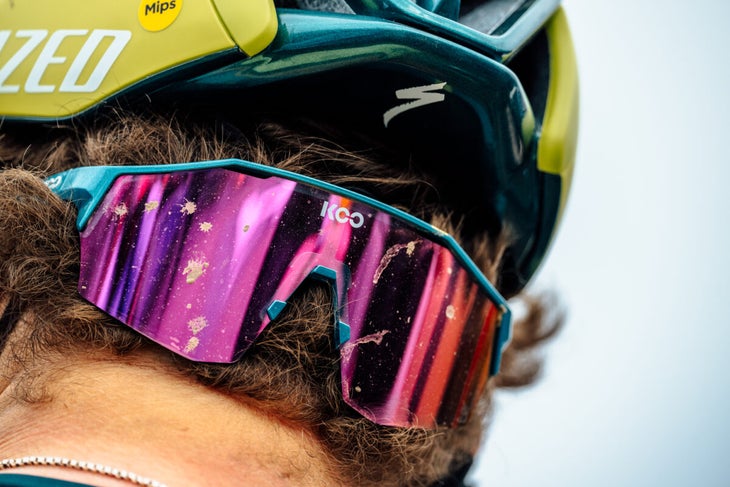
Popular on Velo
What’s it like to be an American cyclist living in France? Watch to get professional road cyclist Joe Dombrowski’s view.
Related content from the Outside Network
One way south, mountain bikers react to their first taste of non-alcoholic craft beer, video review: bmc urs 01 two gravel bike, kiel reijnen vuelta video diary: the painful decision to abandon.

PHOTO ESSAY: A Satisfying Lunch at the Pagosa Senior Center

A nice plan for an enjoyable lunch: The Community Cafe at Pagosa Senior Center.
I noticed they had Crispy Cod on the menu. I made a reservation with a phone call and showed up about 12:30.

I met my good friend and neighbor Scott Bradford and his parents Danna and Steven Mahaffrey. Turns out this was their first time to have lunch at the Community Cafe.
I met another couple who said it was their first time as well.
All agreed their lunch was very good.

A donation of $10 per person is requested and the cost was recently reduced to only $6 for guests 60 and over. A complete wholesome meal and good company. A nice plan for sure.
Executive Chef Cynthia Sperry welcomed me and introduced me to the Sous Chef Rebecca Kyser. I was impressed with their friendly, caring attitude and the kitchen organized and already spotless from the preparation of today’s meal.

Staff from Archuleta Seniors Inc organize several volunteers into a dedicated team to provide nutritious and delicious meals.
Besides hosting 25 guests in the Cafe, 35 customers picked up meals from their cars in the drive-thru.
That day, 11 lunches were delivered in downtown, and 18 were delivered out of town, through the ‘Meals on Wheels’ program.
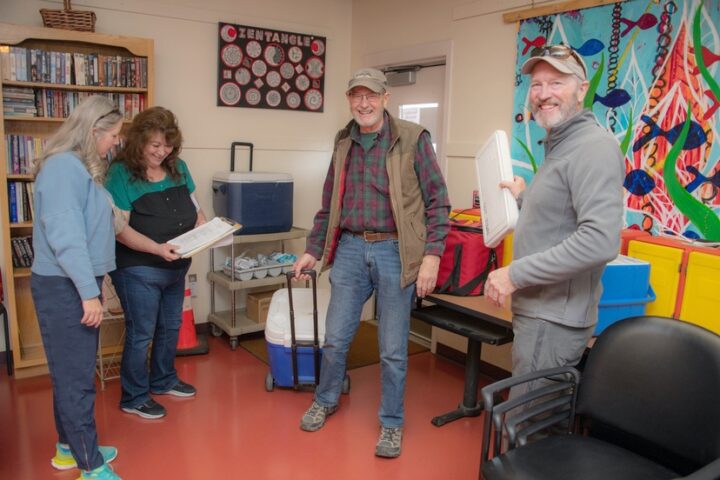
My lunch hit the spot and I intend to enjoy many more lunches at Community Cafe.
Call 970-264-2167 before 9am, to make your reservation.
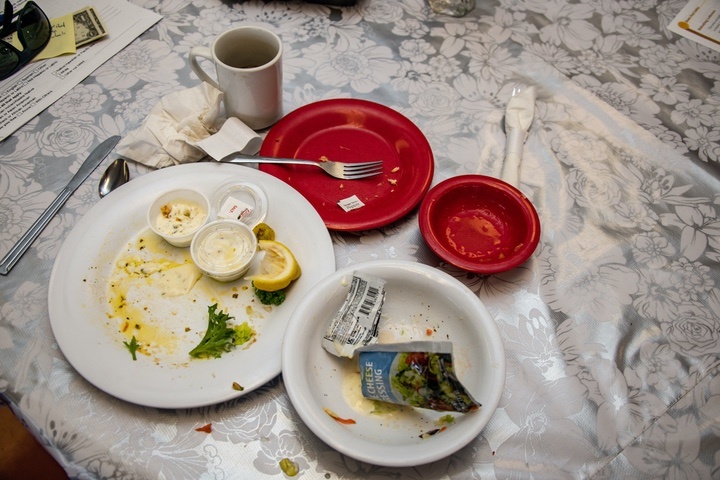
Pagosa Springs photographer Jeff Laydon shoots people, places and products — on location and in his studio. Learn more at PagosaPhotography.com
- Leadership Crisis
- Editor's Pick

In Photos: Grouplove Rocks The Roadrunner
Grouplove electrified Boston’s Roadrunner with their March 29 concert — the penultimate stop on their “Rock and Roll Won’t Save Me” tour. There, Crimson photographer Tracy Jiang captured their energetic and immersive show.

The night kicked off with a captivating performance by Bully, the solo project of German-born singer, songwriter, and guitarist Alicia Bognanno. With a stripped-down acoustic set, Bognanno’s opening act set the tone for the evening.

Grouplove took to the stage with a rendition of “Close Your Eyes and Count to Ten,” led by vocalist Hannah Hooper and guitarist Christian Zucconi.

Fans erupted with excitement and sung along as Hooper stepped to the front of the stage.

Zucconi swayed to the beat of the music, bathed in vibrant red, yellow, and orange hues.

Grouplove soared to fame with their 2011 single “Tongue Tied.” This captivating track clinched the number one spot on the Billboard Alternative Songs chart in 2012, marking a milestone as the band’s first chart-topping single.

In the middle of the set, Hooper took a moment to encourage the crowd to make art, emphasizing how important it is to get to know yourself better and be a better person.
“You’re the only person who can make your art,” Hooper said.

The American alternative rock band is comprised of seven members and has released six studio albums to date.

Drummer Benjamin Homola, who joined the group in 2017, kept the energy up through the 22-song set.

An enthusiastic concert attendee raised their drink in celebration to the music while they sang and danced along.
Grouplove closed out the night with an encore of “Itchin’ on a Photograph,” “Raspberry,” and “Colors.” With summer festivals on the horizon, they will be heading back on tour with P!NK in the fall.
- Organization
- 2023 Presentation Schedule
- News and Information
- Discussion Forums
- Resource Links
- Location / Contact Us
- Competitions
- 2023 Competition schedule
- OUR CLUB'S Overall Competition Rules
- Competition Types (detailed rules)
- Competition Types Summarized
- Competition Results
- Help Topics
- How to: Do many cool things on this site
- How to: Turn off your copyright watermarks
- How to log in
- Knowledge Base
- Privacy Policy
- Recent Changes
- Submit a Support Request
- Subscription Information
- Usage Agreement
- Introduction
- Creating and Managing Your User Account
- Concepts and Features
- Image Library
- Image Sequences
- Uploading Images
- More Videos...
- Visual Pursuits Services
This website uses JavaScript to display drop-down menus and to improve your website experience. JavaScript support is required to view some pages. Click here to see how to enable JavaScript on your browser.
The Sunnyvale Photographic Club is an association of amateur and professional photographers whose purpose is to provide educational and social opportunities that increase their enjoyment of photography. See About our meetings and joining and check our Calendar to confirm location, date, programs. Visitors are always welcome.
Our most recent competition winners
Useful info:
- New member welcome and FAQ
- General Rules for competitions
- How to submit digital images or submit print images
- Documents and Files to download
- News and Articles section (also called News and Information) includes more how-to pages and club info
Cascading Style Sheet (CSS) support is turned off on your browser. This is controlled by Accessibility options on your browser and Display Properties. Your viewing experience will be severely degraded without this support.
This website is hosted by Visual Pursuits , a service provided by Software Pursuits, Inc.
- pop Culture
- Facebook Navigation Icon
- Twitter Navigation Icon
- WhatsApp icon
- Instagram Navigation Icon
- Youtube Navigation Icon
- Snapchat Navigation Icon
- TikTok Navigation Icon
- pigeons & planes
- newsletters
- Youtube logo nav bar 0 youtube
- Twitch logo twitch
- Netflix logo netflix
- Hulu logo hulu
- Roku logo roku
- Crackle Logo Crackle
- RedBox Logo RedBox
- Tubi logo tubi
- Facebook logo facebook
- Twitter Navigation Icon x
- Instagram Navigation Icon instagram
- Snapchat Navigation Icon snapchat
- TikTok Navigation Icon tiktok
- WhatsApp icon whatsapp
- Flipboard logo nav bar 1 flipboard
- RSS feed icon rss feed
Complex Sites
- complexland
Work with us
Complex global.
- united states
- united kingdom
- netherlands
- philippines
- complex chinese
terms of use
privacy policy
cookie settings
california privacy
public notice
accessibility statement
COMPLEX participates in various affiliate marketing programs, which means COMPLEX gets paid commissions on purchases made through our links to retailer sites. Our editorial content is not influenced by any commissions we receive.
© Complex Media, Inc. All Rights Reserved.
Complex.com is a part of
Yung Miami Goes on Tirade After Video Surfaces of Her Being Served Legal Papers at Party
The City Girls member reached her boiling point on X over merchandise that she denies selling.

Yung Miami has found herself in another legal battle.
On Sunday morning (Apr. 7), the City Girls member had a multi-post rant on X about being supposedly being served legal papers in Houston over the weekend. In an Instagram video posted by Larry Taylor, the alleged documents were given to Yung Miami on behalf of Charlie Cee, founder of Act Bad Ent LLC. Cee has accused Yung Miami of trademark infringement, and although she doesn't appear to sell merch with the phrase, Diddy released a single last May featuring City Girls and Fabolous , titled "Act Bad."
"What is this?" Yung Miami says to Taylor in the video after he gets her attention while she's among party attendees.
"To my homeboy Charlie Cee, you've been served!" Taylor tells her.
View this photo on Instagram
Clearly, the moment riled Yung Miami up enough for her to react on X, particularly months after she was alleged to have transported "pink cocaine" along with being a sex worker in a lawsuit against Diddy.
"I'm so tired of the internet & ppl fucking with me everyday!!!" she wrote.

"Tryna serve me some paper over MERCH that I'm not selling is LAME!!! Like everybody wanna go viral so bad let's go viral I'm tired!!!!!!!!" she continued.

Although some fans showed her support, Yung Miami also directed her attention to one X user who was skeptical about the lawsuit being about merch.

After airing out her frustrations, Yung Miami got back to the music and promoted her upcoming Skilla Baby-assisted single, "#CFWM," which released on Wednesday (Apr. 4).

It's understandable that Yung Miami is particularly stressed about legal issues at the moment, especially after being named in an amended lawsuit against Diddy, where she was accused of being a sex worker along with transporting "pink cocaine" for him.
SHARE THIS STORY
Complex Music Newsletter
Stay ready. The playlists, good reads and video interviews you need—delivered every week.
By entering your email and clicking Sign Up, you’re agreeing to let us send you customized marketing messages about us and our advertising partners. You are also agreeing to our
Latest in Music

| BY JAELANI TURNER-WILLIAMS

| BY BRAD CALLAS
Willie Jones, Brittany Spencer, and More Gush About Working With Beyoncé on 'Cowboy Carter'

| BY TARA MAHADEVAN
Big Sean Praises Late 'Dragon Ball' Creator: 'Akira Toriyama Will Live Forever'
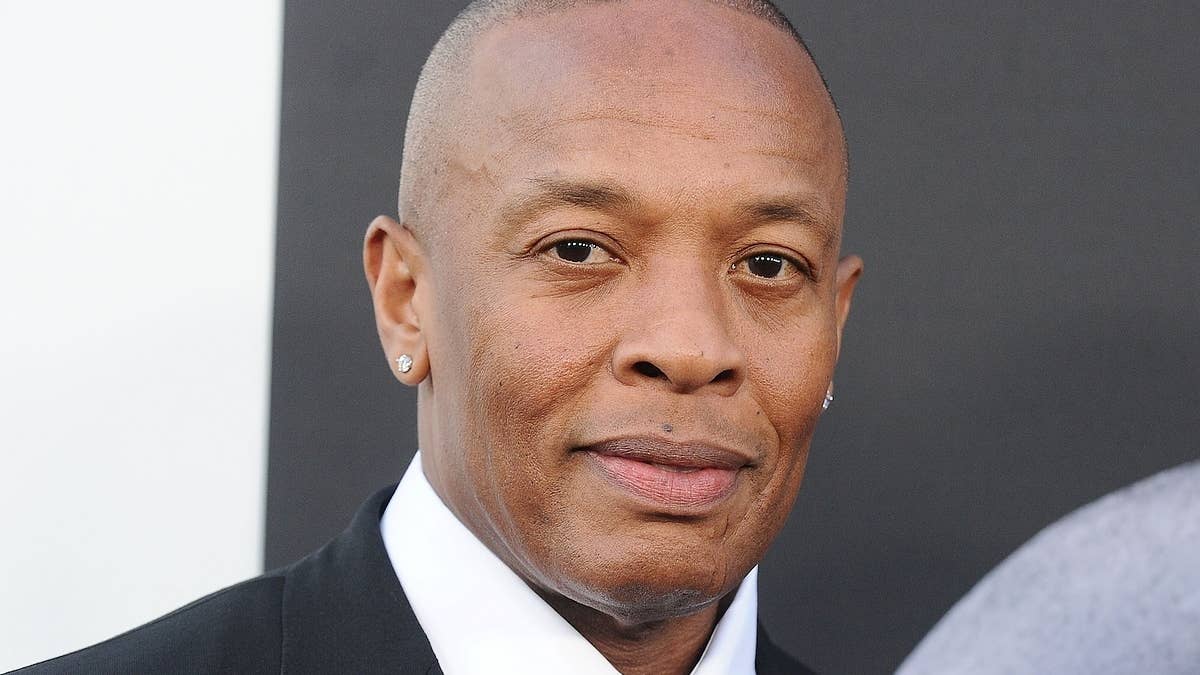
Dr. Dre Jokes About Stevie Wonder's Blindness After Bumping into His 'Hero'
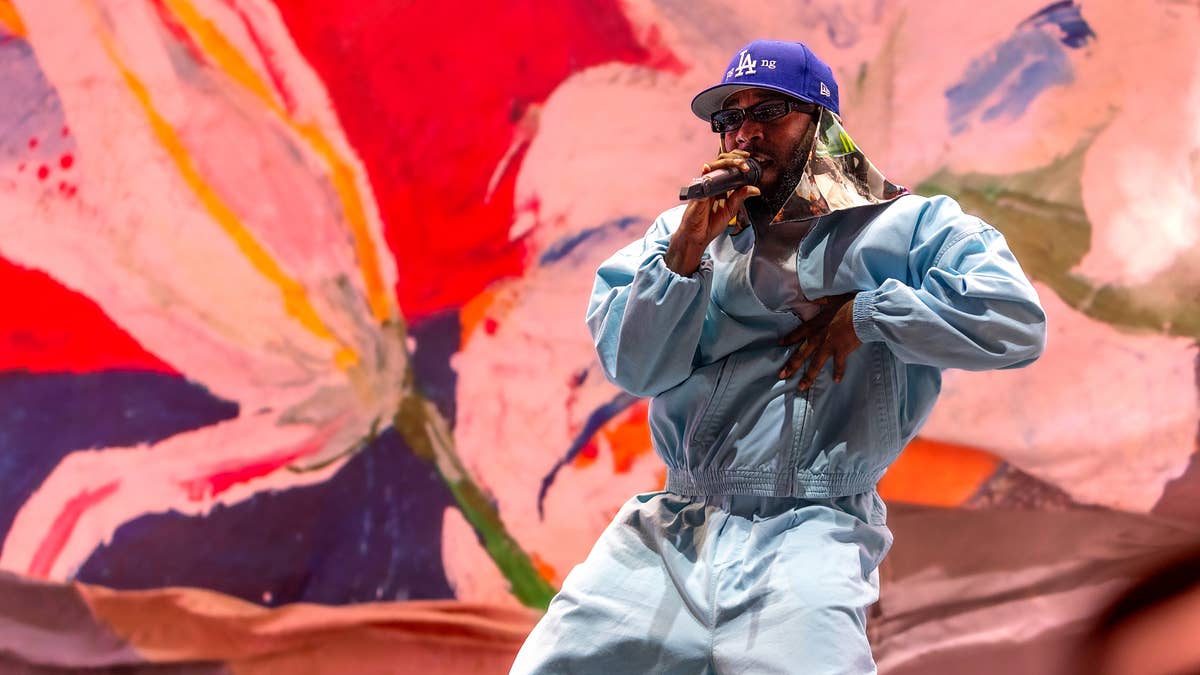
| BY TRACE WILLIAM COWEN
A History of Rappers Apologizing to Kendrick Lamar

| BY PETER A. BERRY
Meet the Model on PartyNextDoor's Provocative 'P4' Album Cover

| BY JOE PRICE
Yo Gotti and Glorilla Pull Up to 2024 CMT Music Awards Red Carpet

Meek Mill Blasts Wale and Claims Rapper Got 'His Teeth Knocked Out' at Birthday Party

Yung Miami Responds to 50 Cent Sharing Clip of Rapper Describing Herself as a 'Full Whore'

50 Cent Trolls Diddy at Dreamville Fest: 'I Love You My Brother, No P Diddy'

IMAGES
VIDEO
COMMENTS
This was done as a way of mourning; the subjects were made to look as if they were merely asleep to give their loved ones comfort that they had passed on peacefully and happily. Eventually, a reduction in the death rate led to the end of this practice. 5. Fashion photography by Sara Page.
500 Words Essay on Photography What is Photography? Photography is the art of capturing light with a camera to create an image. This can be done using a digital camera that stores pictures electronically or an old-fashioned film camera that records them on film. When you take a photo, you freeze a moment in time, which you can look back on later.
The first essay is a long essay on the Photography of 400-500 words. This long essay about Photography is suitable for students of class 7, 8, 9 and 10, and also for competitive exam aspirants. The second essay is a short essay on Photography of 150-300 words. These are suitable for students and children in class 6 and below.
Take your time. A great photo essay is not done in a few hours. You need to put in the time to research it, conceptualizing it, editing, etc. That's why I previously recommended following your passion because it takes a lot of dedication, and if you're not passionate about it - it's difficult to push through. 4.
The Ellen Terry Photograph by Julia Margaret Cameron. The value of the artwork is that it reminds the world that people are all the same. An interesting fact about the artwork is that the picture was taken during the honeymoon of the actress. The Search for Truth: Early Photography, Realism, and Impressionism.
Essay Framework #1: Snapshot structure. The "snapshot" structure is a way of structuring your narrative into a series of "snapshot" moments that take the writer through a journey. A "snapshot" approach to an essay about photography might work really well. Each frame could be a literal snapshot — a meaningful picture that represents something ...
Nevertheless, Sontag's radical thoughts on photography are as potent as ever. Born in 1933, Sontag wrote plays, essays, and fiction until her death in 2004. She had no formal training in art or photography—she studied English and philosophy at Harvard—but immersed herself in the New York cultural scene from 1959 onward.
Always have introductory and closing images just like how you would have an introduction and conclusion to any essay. Shoot at different light, angles, perspectives, etc. and finalise during the editing part the images that will work together to complete the photography essay. Image by Joe Gardner. 5.
Once you have those answers, you can start working on a photo essay of your own. Here's how to do it: 1. Tell a diverse, confident story. Know what you're shooting and why. It's important to figure out what your message is and shoot with a purpose. 2. Make sure you have a wide variety of images.
The Beauty of Photography: An Opinion Essay. During my time at the New York University Tisch School of the Arts, I learned techniques of working with different tools, such as both movie and DSLR cameras. It was interesting to use either device and explore their capabilities as well as the ideas I could implement with them.
Here are some handy essay ideas and examples for inspiration! 1. A day in the life. Your first photo essay idea is simple: Track a life over the course of one day. You might make an essay about someone else's life. Or the life of a location, such as the sidewalk outside your house.
An immersive photo essay uses rich media and story design to capture and keep the reader's attention. Immersive content is typically free of the most distracting elements of the web, such as pop-ups, skyscrapers, and other intrusions on the reading experience. As a basic rule of thumb, immersive content respects the reader's attention.
Hence, the photo-essay must demonstrate in an explicit way how the students are linking their own thoughts to those discussed in class and in the weekly readings as well as to their observations and experiences in Berlin. They prepare beforehand by reading (additional) literature about their selected topic of observation (e.g. everyday life in ...
Career Goals, Photography. Words: 1017 (2 pages) Download. Please note! This essay has been submitted by a student. I chose photographer for my career because, so far what i've done in high school was take photography, so far my experiences have been the greatest thing i've ever done. We've done so many things in that class that we didn ...
Essay About Photography. Photography is one of the most fascinating and rewarding hobbies out there. From capturing a moment in time to creating beautiful works of art, photography can be an incredibly fulfilling experience. Whether you're new to photography or have been practicing for years, writing about it can help you gain insight into ...
In turn, Smith's 1948 photographic essay from Life magazine, "Country Doctor," set a precedent and provided inspiration for John Berger's and Jean Mohr's study of a country doctor in ...
Photography is the art and science of capturing images using light and a camera. The word photography is derived from the Greek words "photos" meaning light and "graphia" meaning drawing or writing. It involves using a camera to capture an image of a subject and preserving that image as a permanent record.
1. Find a topic you care about. Every good photo essay should start with an idea. Otherwise, you'll be shooting without a purpose - and while such an approach may eventually lead to an interesting series of photos, it's far, far easier to begin with a topic and only then take out your camera. As I emphasized above, a photo essay can be ...
Photography is one of the major interests of people who appreciate distinctiveness, and beauty in their surroundings. Let us know more about the significance of photography. 250 words essay on photography. Photography is a process that helps in defining the procedure to create stationary or moving pictures using photographic lens in a camera.
This was popularized in France in the 1700s, but fell out of favor when physicians began writing papers on children whose vision was damaged. Image.
• The Scholarship Committee must receive your Application and "Creative Essay" no later than two weeks prior to the California Affiliate Tournament. Please include a photograph of yourself that can be used in the Tournament Slide Show. Applications and submissions for the 2020 California Essay Scholarship are due March 21, 2020.
Photo Essay - Cultivate Spring 2024. A groundbreaking ceremony was held Nov. 3, 2023, to celebrate the planned construction of the George Wurzel Plant Sciences Building, which is the first phase of a new state-of-the-art Plant Sciences Complex that will help find solutions to feeding the world in sustainable ways, while enhancing the university ...
I am Zhili Chen. I am a Research Scientist in 3D Graphics at Adobe Research based in San Jose, California. My research interest lies in physically based simulation, real-time physics and rendering, 3D reconstruction and virtual reality. I received my Ph.D. in Computer Science from The Ohio State University under supervision of Professor Huamin ...
Young people watch the rare sight of a partial solar eclipse at sunset, as seen from Manila Bay, Philippines, on January 26, 2009. On April 8, 1921, people gaze upward to view a partial solar ...
Download the app . Paris-Roubaix is one of the most distinctive races in cycling, with the arduous cobblestone sectors testing riders' strength, bike handling and courage every year. Chris Auld was there to capture the action in the men's race on Sunday, documenting a battle between many of the best classic specialists in the sport.
A nice plan for an enjoyable lunch: The Community Cafe at Pagosa Senior Center. I noticed they had Crispy Cod on the menu. I made a reservation with a phone call and showed up about 12:30. I met my good friend and neighbor Scott Bradford and his parents Danna and Steven Mahaffrey. Turns out this was ...
An enthusiastic concert attendee raised their drink in celebration to the music while they sang and danced along. Grouplove closed out the night with an encore of "Itchin' on a Photograph ...
The Sunnyvale Photographic Club is an association of amateur and professional photographers whose purpose is to provide educational and social opportunities that increase their enjoyment of photography. See About our meetings and joining and check our Calendar to confirm location, date, programs. Visitors are always welcome. Our most recent ...
Yung Miami has found herself in another legal battle. On Sunday morning (Apr. 7), the City Girls member had a multi-post rant on X about being supposedly being served legal papers in Houston over ...
tively use synthetic aperture photography (Isaksen, 2000; Levo y, 2004) to produce views focused at different depths. Tw o such views, computed from a light field of Golgi-stained rat brain, are shown in figure 10. The ability to cre-ate focal stacks from a single input image allows moving or light-sensitive specimens to be recorded.